Effects of Different Modified Atmosphere Packages on Storage Quality of Peppermint and Establishment of Respiration Rate Model of Peppermint Preservation
-
摘要: 为了提高薄荷采后贮藏时间和预测薄荷采后的呼吸速率,通过失重率、相对电导率、色差、感官评分、维生素C含量、总叶绿素含量和菌落总数指标的测定,从包装材料为聚乙烯包装(PE)、邻苯基苯酚复合聚乙烯包装(OPP1.8/PE3.5、OPP1.8/PE4.5、OPP2.3/PE4.5)、高密度聚乙烯包装(HDPE),O2浓度为3%~7%,CO2浓度为5%~15%中筛选薄荷的气调包装条件,并以O2、CO2和包装材料为因素开展响应面优化试验,优化薄荷采后保鲜的最优气体比例及包装材料,在此基础上研究薄荷挥发性化合物和表面真菌多样性。使用密闭空间系统法测量薄荷在最优包装材料内O2和CO2的比例。在此基础上,再采用渗透系统法得到模型方程,并对其进行数值模拟。运用Matlab软件对处于平衡点时的呼吸速率进行计算,利用二次多项式模型对结果进行回归分析。利用高通量测序对最优、最差和对照处理组的薄荷进行测序和分析,比较其优势菌群的占比变化。结果表明:最优气调比例及包装材料为3.5% O2+9.4% CO2和HDPE,该包装方式可将薄荷的保鲜期由7~9 d延长至10~12 d,可抑制薄荷贮藏期间芳樟醇等醇类物质的增加,减少D-香芹酮等酮类物质的挥发,延缓薄荷衰老,基于以上实验结果建立薄荷二次多项式呼吸速率模型,并能够更准确设计薄荷的气调包装条件,较好地抑制薄荷贮藏期间子囊菌门和霉菌门等腐败菌的生长。Abstract: To extend the post-harvest storage duration of peppermint and predict the post-harvest respiration rate of peppermint, peppermint was subjected to modified atmosphere packaging conditions with different packaging materials (PE, OPP1.8/PE3.5, OPP1.8/4.5, OPP2.3/PE4.5, HDPE), various O2 concentrations (3%~7%), and different CO2 concentrations (5%~15%). Parameters including weight loss rate, relative electrical conductivity, color difference, sensory evaluation, vitamin C content, total chlorophyll content, and total colony count were measured. Response surface optimization experiments were conducted with O2, CO2, and packaging materials as factors to determine the optimal gas ratios and packaging materials for post-harvest preservation of peppermint. On this basis, the volatile compounds and surface fungal diversity of peppermint were studied. The proportions of O2 and CO2 inside the optimal packaging materials for peppermint were measured by using the closed space system. Based on this, a model equation was obtained using the permeation system method and numerically simulated. Matlab software was used to calculate the respiration rate at equilibrium, and a regression analysis was performed using a quadratic polynomial model. High-throughput sequencing was used to sequence and analyze peppermint samples from the optimal, worst, and control treatment groups, comparing changes in the proportion of dominant microbial communities. The results showed that the optimal gas composition and packaging material were 3.5% O2+9.4% CO2 and HDPE, which extended the freshness period of peppermint from 7~9 days to 10~12 days. It could inhibit the increase of linalool and other alcohols during peppermint storage, reduce the volatilization of D-carvone and other ketones, and delay the senescence of peppermint. Based on these experiments, a more accurate quadratic respiration rate model for peppermint under controlled atmosphere packaging was established, which effectively inhibited the growth of decay-causing microorganisms such as Ascomycota and Mycetes in peppermint.
-
薄荷(Mentha haplocalyx Briq.),又称留兰香、银丹草,属于唇形科薄荷属植物[1],是一味重要的药食同源的本草药材,其也可用作调味剂和功能茶,是世界三大香料之一,广泛在印度、中国等国种植,有“亚洲之香”的美誉[2]。但是目前对于薄荷的研究主要集中于其挥发油及化学成分上[3−6],薄荷的采后保鲜技术研究相对较少,而外界温度、水蒸气、氧气、二氧化碳以及微生物的变化都会造成薄荷严重的变质和损耗,影响其货架期。因此,亟需对薄荷采后保鲜开展研究提升薄荷品质。
改善气调包装(Modified Atmosphere Packaging,MAP)通过在包装内保持高二氧化碳和低氧浓度的气体环境,从而降低果蔬的呼吸速率[7],减少微生物腐败和水分流失,延缓果蔬成熟,保持果蔬品质,延长果蔬作物的贮藏和货架期[8]。例如,84% N2+6% O2+10% CO2的气调处理可将紫苏叶贮藏期延长到20 d左右[9]。与此同时,气调处理对莴苣叶片贮藏期的张力、破裂力和破裂能没有显著影响,保持了莴苣叶片的新鲜度[10]。由于MAP对蔬菜的保鲜处理操作简单,性价比高,具有较高的应用价值[11]。但当前对于果蔬气调保鲜方面还缺少与包装材料相结合的研究,且用于薄荷采后保鲜的包装材料较为单一,而包装材料的性质对食品也起到关键的保护作用。比如,透气性良好是包装材料需要具备的条件,可在贮藏期内维持薄荷的正常呼吸,同时包装材料的透湿性也十分重要,还需要具有一定的拉伸强度、抗冲击强度、断裂伸长率,从而使薄荷采后运输过程中减少营养物质的流失[12]。
利用呼吸速率模型预测果蔬采后贮藏期间的呼吸速率,使果蔬的呼吸速率保持在较低水平同时不会发生厌氧呼吸是当下果蔬采后保鲜的研究热点[13]。气调包装呼吸速率模型在很多果蔬的保鲜中被应用,但是由于不同的果蔬之间呼吸速率差异较大[14−15],在实际应用中需要将经验模型和理论模型结合,共同评价气调包装中果蔬呼吸速率,利用多变量或指数函数来刻画不同气体比例对呼吸强度的影响,在储藏过程中,以顶空气体分析仪测量的CO2含量和O2的含量变化为基础,通过Matlab进行拟合,得到相应的公式参数[16]。当前关于薄荷采后MAP结合呼吸速率模型的研究较少,而基于呼吸速率模型的MAP贮藏方式对于薄荷采后保鲜具有十分重要的意义。
本文以薄荷为研究对象,通过测定贮藏期间薄荷失重率、叶绿素含量等指标变化,筛选出能保持贮藏期内薄荷综合感官品质较好的包装材料,在此基础上,基于二次多项式模型对薄荷呼吸速率进行线性回归分析,建立薄荷呼吸速率模型,并对贮藏期间薄荷表面微生物菌群结构进行分析,通过对包装袋内薄荷气体成分变化、薄膜透气性和呼吸速率模型相关数据计算及预测薄荷初始的O2吸收速率和CO2的释放速率,为薄荷气调包装保鲜中使用的包装材料的研发提供理论依据,提高了薄荷采后贮藏技术,延长薄荷货架期,同时为其他小品种蔬菜采后保鲜技术的开发提供参考。
1. 材料与方法
1.1 材料与仪器
新鲜薄荷叶片 4 cm×2 cm,淡绿色,新鲜无损伤,实验当天采自北京市大兴裕农优质农产品有限公司基地。首先对薄荷叶片进行清洗以及两次消毒、并进行脱水处理,甩干清洗时多余的水分。挑选叶片挺立饱满、大小均匀、感官优良的薄荷进行实验;聚乙烯包装(PE)、邻苯基苯酚复合聚乙烯包装(OPP1.8/PE3.5、OPP1.8/PE4.5、OPP2.3/PE4.5)、高密度聚乙烯包装(HDPE) 北京华正龙泰科技有限公司;无水乙醇、丙酮、氯化钠、2,6-二氯靛酚、抗坏血酸、草酸 分析纯(AR),国药集团化学试剂有限公司;DNA提取试剂盒 Mo Bio/QIAGEN;Pyrobest DNA Polymerase TaKaRa;Quant-iT PicoGreen dsDNA Assay Kit Invitrogen;AxyPrep DNA Gel Extraction Kit Axygen;BlasTaqTM 2×qPCR Mix试剂盒 爱必信上海生物科技有限公司。
AL204电子天平 梅特勒-托利多仪器有限公司;DDS-307A电导率测定仪 雷磁仪器有限公司;HHSY21-NI4恒温水浴锅 北京精科华瑞仪器有限公司;KQ-500DE超声波清洗机 昆山市超声仪器有限公司;TU-1810紫外可见分光光度计 北京普析通用仪器有限公司;CM-700d色差仪 彩谱科技有限公司;气体混配器 丹麦丹圣(PBI/ Dansensor A/S)有限公司;CTC CombiPAL自动顶空进样装置、GC-IMS气相-离子迁移谱仪 德国G.A.S.公司;7890A-5975C顶空分析仪 Agilent 公司;DF-101S包材测厚仪 巩义市英裕仪器公司;FlavourSpec®风味分析仪 北京格林德国际科技有限公司;E6090荧光分光光度计 Invitrogen;Flx800酶标仪 BioTek;HDL超净工作台 北京东联哈尔仪器制造有限公司;LT-CPS50C立式压力蒸汽灭菌器 上海博讯医疗生物仪器股份有限公司;FW100粉碎机 天津市泰斯特仪器有限公司;QuantStudio 3 qPCR仪 美国Thermo Fisher Scientific公司。
1.2 实验方法
1.2.1 不同包装材料的筛选及其对薄荷品质的影响
1.2.1.1 样品包装及贮藏
取新鲜薄荷叶片样品在5种不同的包装材料(PE、OPP1.8/PE3.5、OPP1.8/PE4.5、OPP2.3/PE4.5、HDPE)中进行装袋包装,规格均为245 mm×245 mm。每袋装入30 g薄荷,置于4 ℃的冰箱中贮藏,在第0、3、6、9、12、15和18 d分别测量薄荷的各项理化指标,每个指标至少3次平行,结果表示为平均值±标准差。
1.2.1.2 失重率的测定
将第0 d薄荷的重量记录初始数据,之后每天称量薄荷的质量,通过式(1)计算失重率[17]。
W(%)=W0−WnW0×100 (1) 式中:W为失重率,%;W0为第0 d鲜重,g;Wn为第n d鲜重,g。
1.2.1.3 相对电导率的测定
每组取3片薄荷叶片,每片叶片各取直径为5 mm的圆片5个,共计15个于锥形瓶中,轻轻冲洗后加入50 mL蒸馏水测定初始电导率。摇床振荡3 h后检测体系的电导率并记录。随后沸水浴5 min,冷却至室温后检测电导率[18],并按照式(2)计算相对电导率。
C(%)=P1−P0P2−P0×100 (2) 式中:C为相对电导率,%;P0为初始去离子水电导率,S;P1为轻轻振荡3 h后的电导率,S;P2为振荡3 h后在沸水浴中加热5 min冷却后的电导率,S。
1.2.1.4 色差的测定
采用色差仪测定薄荷在贮藏期间的L*、a*、b*[19]。将色差仪放置在薄荷叶片测试头上,以仪器白板为标准空白色泽,测量出薄荷的L*,a*和b*,通过公式(3)计算得出ΔE,ΔE越小表示越接近新鲜薄荷。
ΔE=√(ΔL∗)2+(Δa∗)2+(Δb∗)2 (3) 式中:L*为亮度,表示黑白,0为黑,100为白;a*为红绿,正值为红,负值为绿,0为中性;b*为黄蓝,正值为黄,负值为蓝,0为中性。
1.2.1.5 感官评价
由10人组成品评组人员评价薄荷贮藏期内感官品质,观察薄荷在贮藏期间的变化,并从薄荷叶片表面的颜色、萎蔫程度、有无腐烂等几个方面对薄荷的感官进行打分评定。具体的感官评分标准见表1。
1.2.1.6 抗坏血酸含量的测定
采用2,6-二氯靛酚法测定薄荷中抗坏血酸含量。准确称量10 g薄荷于研钵中,加入少量2%的草酸研磨成匀浆,然后转入100 mL容量瓶中,用2%的草酸定容,摇匀,提取10 min,过滤。吸取10 mL滤液于100 mL三角瓶中,用标定好的2,6-二氯靛酚溶液滴定至淡红色,且15 s不褪色为终点,平行滴定3次,同时用2%草酸做空白滴定[21]。计算公式(4)如下:
VC含量(mg/100g)=(V−V0)×ρ(V2/V1)×m×100 (4) 式中:V为滴定样品消耗2,6-二氯靛酚溶液体积,mL;V0为滴定空白消耗2,6-二氯靛酚溶液体积,mL;m为样品质量,g;ρ为标定1 mL 2,6二氯靛酚溶液消耗多少标准维生素C的质量,mg/mL;V1为提取液总体积,mL;V2为滴定时所取体积,mL。
1.2.1.7 总叶绿素含量的测定
按照NY/T 3082-2017测定薄荷总叶绿素含量。在黑暗条件下使用体积分数80%丙酮浸提叶片叶绿素,利用分光光度计测定663、645 nm处吸光度,按式(5)计算叶绿素质量浓度(mg/L),再按公式(6)计算组织中叶绿素质量比,单位为mg·g−1。
ρ(叶绿素)=20.29×A645+8.05×A663 (5) ω(叶绿素)=ρ(叶绿素)×V×Nm×1000 (6) 式中,A为分光光度值,OD;V为提取液体积,mL;N为稀释倍数;m为样品鲜重,g。
1.2.1.8 菌落总数的测定
按照GB 4789.2-2016方法测定薄荷菌落总数。取25 g薄荷加入225 mL无菌生理盐水均质2 min,取1 mL样液稀释10倍,每个稀释梯度取1 mL样液于无菌培养皿中,分别倒入20 mL平板计数琼脂培养基,摇晃均匀,冷却凝固后将平板在37 ℃培养48 h,结果以lg(CFU/g)计。
1.2.2 响应面试验优化气体比例对薄荷品质的影响
根据前期对薄荷气调保鲜研究结果得出O2浓度为3%~7%,CO2浓度为5%~15%时能保持薄荷较好的感官品质[22],同时结合上述实验对5种不同包装材料的保鲜效果的筛选,选取对叶绿素影响较大的3个因素:O2浓度,CO2浓度和包装材料,各取3个水平因素分别记为水平−1、0、1,选取的3种包装材料分别为:PE、OPP1.8/PE3.5、HDPE。选用叶绿素含量为响应值进行薄荷贮藏期间品质评价,实验因素水平及编码设计如表2所示。运用Design Expert软件(V8.0.6.1)进行数据分析,建立二次回归方程。
表 2 响应面试验因素水平设计Table 2. Factor level design of response surface experiment因素 水平 −1 0 1 O2浓度(%) 3 5 7 CO2浓度(%) 5 10 15 包装材料 PE OPP1.8/PE3.5 HDPE 1.2.3 运用GC-IMS分析不同气调包装中薄荷挥发性成分
将薄荷样品分为3组,分别为气调包装A组(3.5% O2+9.4% CO2+87.1% N2处理及HDPE包装)、气调包装B组(7% O2+5% CO2+86% N2处理及PE包装)和对照组(不气调处理及HDPE包装)。其中A组为响应面优化试验中预测出的最佳条件,B组为保鲜效果最差的包装条件。将三组样品进行4 ℃保存。
参考张乐等[23]的方法,精确称取0.500 g薄荷样品于20 mL具有聚四氟乙烯隔垫密封的顶空瓶中,将顶空瓶40 ℃加热孵化10 min,孵化转速250 r/min;不分流顶空进样200 μL。进样针温度85 ℃,进样前清洗时间30 s,进样后清洗时间6 min[24]。
GC条件:MXT-5柱(15 m×0.53 mm,0.53 μm);色谱柱温度60 ℃;载气为高纯氮气(≥99.999%)。载气流速程序为初始2.0 mL/min,保持2 min,在2~10 min线性增至10.0 mL/min,在10~20 min线性增至100.0 mL/min,在20~40 min线性增至150.0 mL/min,然后停止流动,总运行时间为40 min[23]。
IMS条件:离子源为氘(6.5 keV);正离子模式;漂移管长度9.8 cm;管内线性电压500 V/cm;漂移管温度45 ℃;漂移气流速150 mL/min(氮气纯度≥99.999%)。
1.2.4 薄荷呼吸速率模型的建立
1.2.4.1 包装材料厚度和包装材料气体透过率的测定
采用随机抽取的方法获得需要测定的包装膜,在包装膜上选取处于不同方位的十个点使用测厚仪(精度为0.001 mm)测量其厚度,对所获得数据进行平均处理即可得到包装膜的实际厚度。对于气体透过率的测定使用小袋注气法[25]。
1.2.4.2 采用顶空分析仪测定薄荷的呼吸速率
挑选新鲜无损伤的薄荷叶片,经过两次清洗消毒,将薄荷放入包装袋(长×宽为245 mm×245 mm)中。本文采用密闭系统法进行研究。
密闭系统法:将100 g样品放入245 mm×245 mm的包装袋中,每隔4 h测定容器内CO2和O2的浓度,即细胞组织生产CO2或消耗O2的数量。通过式(7)和(8)计算呼吸速率[26]。
RO2=(ytiO2−ytfO2)×V100×M×(tf−ti) (7) RCO2=(ytfCO2−ytiCO2)×V100×M×(tf−ti) (8) 式中:ytiO2、ytiCO2分别为O2、CO2起始测量浓度,%;ytfO2、ytfCO2分别为测量结束时O2、CO2浓度,%;V是指密封容器的自由体积(V容器−V果实),mL;M是果实的质量,kg;tf、ti是测量终止、起始时间,h;RO2、RCO2是O2的消耗速率和CO2的生成速率,mL/(kg·h)。
1.2.4.3 基于二次多项式的呼吸速率模型的建立
采用渗透系统方法[27]测量薄荷的呼吸速率,取100 g左右的薄荷,装入上述包装袋中,先用包装机抽真空充入800 mL左右的空气并密封,放入冷库中开始记录,每隔4 h用顶空分析仪扎入密封片,测量包装袋内的气体浓度并记录数据,每个处理重复三次平行。并运用二次多项式方程(式(9))对实验结果进行回归分析,拟合出最优的薄荷呼吸速率模型。
R=a0+a1[O2]+a2[CO2]+a3[O2]2+a4[CO2]2+a5[O2][CO2] (9) 式中:ai(i=0,1,…,5)为实验拟合常数。
1.2.4.4 呼吸速率模型的验证
另取100 g左右的薄荷样品,样品处理同1.2.4.3,对薄荷样品进行气体浓度测定,将所测[O2]、[CO2]浓度代入所建立的呼吸模型,得出薄荷呼吸速率的预测值ˆR,并将预测值ˆR与实测值R进行比较[28]。
1.2.5 不同气调及包装条件下薄荷表面真菌多样性的测定
1.2.5.1 薄荷样品分组
将薄荷随机分为两组,实验组1:采用HDPE包装及3.5% O2+9.4% CO2+87.1% N2气调处理的薄荷样本(编号为A0和A12);实验组2:采用PE包装及7% O2+5% CO2+86% N2气调处理的薄荷样本(编号为B0和B12);对照组:采用HDPE包装及不气调处理的薄荷样本(编号为C0和C12),将所有样本置于4 ℃贮藏,取各组第12 d样品进行下一步微生物菌群分析。
1.2.5.2 薄荷样品处理
分别准确称量10 g薄荷样品加入100 mL无菌缓冲液,置于摇床200 r/min振荡30 min。然后依次用10 μm和0.22 μm滤膜过滤去除杂质,过滤后的样品放入无菌离心管中置于−80 ℃保存。
1.2.5.3 DNA提取
使用DNA提取试剂盒从样品中提取真菌DNA。用2%琼脂糖凝胶对提取获得的DNA样品质量进行检测,使用无菌无酶水将样品DNA稀释至1 ng/μL。
1.2.5.4 PCR扩增及测序
根据PCR反应体系,对真菌ITS1区域扩增。所有PCR混合液加入15 µL Phusion® High-Fidelity PCR Master Mix(New England Biolabs)、0.2 µmol/L引物和10 ng基因组DNA模板,在98 ℃下进行1 min的第一次变性,然后在98 ℃(10 s)、50 ℃(30 s)和72 ℃(30 s)下进行30次循环,最后在72 ℃下保持5 min。PCR产物使用2%浓度的琼脂糖凝胶进行电泳检测;对检测合格的PCR产物进行磁珠纯化,采用酶标定量,根据PCR产物浓度进行等量混样,充分混匀后使用2%的琼脂糖凝胶电泳检测PCR产物,对目的条带使用通用型DNA纯化回收试剂盒(TianGen)回收产物。
1.2.5.5 测序数据处理
使用DAN Library Kit for Illumina建库试剂盒进行文库构建,构建好的文库经过Qubit定量和文库检测,合格后,使用MiSeq进行上机测序。测得的原始数据在Illumina平台(北京诺禾致源科技股份有限公司)经过拼接、过滤除去干扰数据,得到有效数据,然后进行丰度、多样性指数等分析,挖掘样品间物种组成差异。
1.3 数据处理
所有实验至少重复3次,结果表示为平均值±标准差,并使用SPSS 24.0统计软件通过t检验进行统计分析。运用Design Expert.V8.0.6.1软件设计响应面试验。试验数据使用Matlab7.1软件进行非线性拟合得到拟合曲线。
2. 结果与分析
2.1 不同包装材料的筛选及其对薄荷品质的影响
包装材料的透气性能是气调包装保鲜领域今后研究的首要主题。表3为PE、OPP1.8/PE3.5、OPP1.8/4.5、OPP2.3/PE4.5、HDPE5种不同包装材料的技术参数,该参数为进一步筛选可延长薄荷保鲜期的包装材料和分析薄荷呼吸速率提供数据支撑。
表 3 不同包装材料技术参数Table 3. Technical parameters of different packaging materials包装材料 O2透气系数
(cm3/m2·24 h·0.1 MPa)CO2透气系数
(cm3/m2·24 h·0.1 MPa)N2透气系数
(cm3/m2·24 h·0.1 MPa)0.1 MPa水蒸气透过率
(g/m2·24 h)厚度(mm) PE 157.3 314 565 0.556 0.03735 HDPE 143.8 316 626 0.607 0.05557 OPP1.8/PE3.5 245.8 489 336 0.732 0.03431 OPP1.8/PE4.5 182 210.8 221 0.592 0.03709 OPP2.3/PE4.5 175 306 478 0.521 0.03689 失重率是评价叶类蔬菜饱和度、脆性和商品价值的重要指标,失重率下降越大品质越坏。图1表示的是贮藏期间不同包装材料对薄荷品质的影响,其中薄荷在贮藏期间失重率变化见图1(a),整体呈现不同上升趋势,贮藏前期,OPP1.8/PE3.5和HDPE组失重率较为缓慢,PE和OPP1.8/PE4.5两组失水迅速。贮藏至第12 d,OPP1.8/PE4.5组薄荷萎蔫程度最大,失重率为29.56%,失重率最小的为HDPE包装的薄荷,失重率是19.23%,低于其他4种包装材料。结果表明,在OPP1.8/PE4.5包装条件下薄荷失水率最高,可能由于果蔬在贮藏期间进行呼吸作用和蒸腾作用导致水分含量逐渐流失,而该膜的CO2透过率最小,导致薄荷进行无氧呼吸,从而出现萎蔫现象[29]。
![]() 图 1 贮藏期内不同包装材料对薄荷失重率(a)、相对电导率(b)、色差(c)、感官评价(d)、VC含量(e)、叶绿素含量(f)和菌落总数(g)的影响Figure 1. Effects of different packaging materials on weight loss (a), relative conductivity (b), color difference (c), sensory evaluation (d), VC content (e), chlorophyll content (f) and total number of colonies (g) of peppermint during storage
图 1 贮藏期内不同包装材料对薄荷失重率(a)、相对电导率(b)、色差(c)、感官评价(d)、VC含量(e)、叶绿素含量(f)和菌落总数(g)的影响Figure 1. Effects of different packaging materials on weight loss (a), relative conductivity (b), color difference (c), sensory evaluation (d), VC content (e), chlorophyll content (f) and total number of colonies (g) of peppermint during storage相对电导率与植物组织的细胞膜完整性与衰老程度有很大的关系,当细胞膜受损时,细胞膜的选择透过性功能被削弱,细胞内物质可自由通过,导致相对电导率增大[30]。图1(b)所示的是贮藏期间不同包装对薄荷相对电导率的影响,随着贮藏时间的延长,5种不同包装材料内的薄荷相对电导率都在逐渐升高。在贮藏第9 d,OPP2.3/PE4.5组增加了6.8%,PE组增加了4.26%,OPP1.8/PE3.5组增加了4.35%、OPP1.8/PE4.5组增加了5.04%。可见,PE、OPP1.8/PE3.5组相对电导率维持较低水平,增量较少,对于保护薄荷细胞膜完整性效果最好。
新鲜蔬菜的外部颜色是决定消费者对该产品的接受程度的最重要因素之一[31]。图1(c)表示的是薄荷在贮藏期间的色差变化,薄荷颜色变化随着贮藏时间的增长呈现增加趋势,表明薄荷色泽逐渐变深,随着时间增加薄荷的新鲜度降低。对比5种不同的包装材料可看出,薄荷贮藏至第18 d时OPP1.8/PE3.5组色差为18.76,低于OPP1.8/PE4.5组和OPP2.3/PE4.5组,主要是由于OPP1.8/PE3.5的氧气透过率以及水蒸气透过率较其余四种包装材料高,从而减少薄荷在包装袋中产生水气,降低薄荷腐烂速度,从而保持薄荷色泽。因此选择OPP1.8/PE3.5包装材料可以更好地保持薄荷原有的颜色,维持薄荷的感官品质。
感官评价可直观地反映果蔬采后的生理变化,直接影响叶菜类新鲜程度的是黄化或腐烂。其中图1(d)所示的是不同包装对薄荷感官评分的影响。随着贮藏时间的增加,薄荷的感官评分都呈现下降的趋势,表明薄荷的感官品质在逐渐下降。HDPE组的薄荷新鲜程度较好,出水少,轻微褐变,贮藏第12 d时还保持一定商品性,而PE组在贮藏前期评分稳定下降速度较缓慢,在贮藏至第9 d时,叶片失水、变黄、开始失去挺立状态。因此,针对感官评价指标来说,5种不同包装方式中:HDPE包装的保鲜效果显著高于其他四种材料,可能是因为HDPE包装能更好地抑制腐烂菌的繁殖生长,避免其遭受微生物的侵染,减少腐烂的发生,同时能更好地减缓薄荷水分流失和生理代谢速率,保持营养价值和品质[32]。
VC是一种非酶抗氧化物质,它是评估薄荷质量好坏的重要指标之一,对减少活性氧的积累具有一定的作用[33]。图1(e)所示的是贮藏期间不同包装对薄荷抗坏血酸含量的影响,随着贮藏时间的延长,5组不同包装材料中的薄荷抗坏血酸含量均有所降低,其中OPP1.8/PE3.5下降幅度明显小于OPP2.3/PE4.5组,OPP1.8/PE3.5组在贮藏第9 d,仍保持较高抗坏血酸含量,为6.365 mg/100 g,与第0 d相比下降了30.7%,而OPP2.3/PE4.5组在第12 d明显低于其他四组,这是由于抗坏血酸在贮藏过程中又很容易被空气氧化,而OPP1.8/PE3.5包装材料透氧性较高,呼吸强度较高,因此抗坏血酸含量下降也比其他四种包装材料小。
叶绿素含量通常作为绿色蔬菜是否新鲜的重要指标,与蔬菜的感官品质和营养价值联系紧密。图1(f)所示的是贮藏期间不同包装对薄荷叶绿素含量的影响,随贮藏时间增加,各组薄荷总叶绿素含量均在下降,在贮藏第12 d,PE和HDPE包装的叶绿素含量均保持较高水平,分别为0.55 mg/g和0.52 mg/g,为OPP1.8/PE3.5组的1.14倍和1.08倍。该叶绿素变化趋势与赵洁所研究的贮藏菜心叶绿素含量变化趋势较为一致[34]。因此,对于5种不同包装材料内的薄荷来说,经PE材料包装后,薄荷中的总叶绿素含量损失较低,这是由于该包装气体透过率较高,薄荷呼吸作用产生的气体可较快散发出去,从而减缓叶绿素的分解,可以有效地阻止总叶绿素含量快速损失,更好保护薄荷叶片的色泽。
微生物的污染和增殖会导致薄荷的感官品质下降,降低其商业价值。图1(g)所示的是贮藏期间不同包装对薄荷菌落总数的影响,贮藏期内薄荷的微生物数量均呈上升趋势,贮藏至第12 d时,PE和HDPE包装抑制微生物效果最好,细菌平均对数仍低于6 lg(CFU/g)。由于PE和HDPE包装氧气透过率和水蒸气透过率较高,薄荷在贮藏期间进行的呼吸作用以及蒸腾作用产生的气体可以较好地与外界气体环境进行交换,从而保持包装袋内较好的贮藏环境,降低微生物的污染和增殖,保持薄荷较好的品质特性[35]。
通过该实验研究,筛选出保鲜效果较好的PE、OPP1.8/PE3.5、HDPE三种包装材料,同时结合前期预实验得出的最佳气体浓度结果,即O2浓度为3%~7%,CO2浓度为5%~15%。将这三个因素设定三个水平进行后续实验。
2.2 气体比例对薄荷品质的影响
2.2.1 叶绿素模型建立与分析
包装材料对果蔬贮藏期间感官品质的影响较大,薄荷等叶菜在贮藏期间导致其变质腐败的主要原因为包装材料的透气性能,而用透气性能较好的包装材料可减少薄荷贮藏期间呼吸作用和蒸腾作用产生的水汽[36],例如前人将苹果与果箱间缓冲材料作为影响因素进行响应面优化试验,可较好地明确运输时苹果损伤的体积最小的最佳缓冲材料种类[37]。本研究采用相同模式进行试验设计,将包装材料种类作为影响因素,根据包装材料筛选实验结果,以及前期对薄荷气调保鲜研究结果得出的O2浓度为3%~7%,CO2浓度为5%~15%时能保持薄荷较好的感官品质[22],利用Box-Behnken设计法,以Design-ExpertV 8.0.6软件设计三因素三水平的响应面试验。在绿叶蔬菜贮藏保鲜中,叶绿素含量通常作为蔬菜新鲜与否的重要指标,其分解程度对薄荷色泽及感官品质有较大影响,例如Oliveira等[38]将叶绿素含量作为响应值优化菠菜叶片的最佳包装温度和湿度,因此本研究选用叶绿素含量为响应值,通过设计响应面优化薄荷最佳保鲜工艺参数,设计与结果如表4所示。通过叶绿素含量(Y)与O2浓度(A)、CO2浓度(B)、包装材料(C)之间建立回归模型,对表4中响应面试验结果进行多次回归拟合,得到叶绿素模型及回归系数的回归分析结果(表5)。采用软件进行非线性回归的二次多项式拟合,得到回归方程:Y=0.65−0.058A−0.00525B−0.052C+0.046AB−0.03AC−0.016BC−0.028A2−0.11B2−0.019C2。
表 4 响应曲面优化薄荷气调包装条件的试验设计与结果Table 4. Experimental design and results of response surface optimization for modified atmosphere packaging conditions of peppermint试验号 O2浓度(%) CO2浓度(%) 包装材料 叶绿素含量(mg/g) 1 3 5 OPP1.8/PE3.5 0.636 2 7 5 OPP1.8/PE3.5 0.402 3 3 15 OPP1.8/PE3.5 0.524 4 7 15 OPP1.8/PE3.5 0.475 5 3 10 PE 0.674 6 7 10 PE 0.641 7 3 10 HDPE 0.624 8 7 10 HDPE 0.473 9 5 5 PE 0.553 10 5 15 PE 0.584 11 5 5 HDPE 0.486 12 5 15 HDPE 0.452 13 5 10 OPP1.8/PE3.5 0.668 14 5 10 OPP1.8/PE3.5 0.658 15 5 10 OPP1.8/PE3.5 0.641 16 5 10 OPP1.8/PE3.5 0.624 17 5 10 OPP1.8/PE3.5 0.658 表 5 叶绿素模型及回归系数的回归分析结果Table 5. Regression analysis results of chlorophyll model and regression coefficient来源 离差平方和 自由度 均方 F值 P值 显著性 模型 0.12 9 0.014 36.33 <0.0001 *** A-O2浓度 0.027 1 0.027 72.25 <0.0001 *** B-CO2浓度 2.21E-04 1 2.21E-04 0.58 0.4696 C-包装材料 0.022 1 0.022 57.61 0.0001 *** AB 8.56E-03 1 8.56E-03 22.68 0.0021 ** AC 3.48E-03 1 3.48E-03 9.23 0.0189 * BC 1.06E-03 1 1.06E-03 2.8 0.1382 A2 3.34E-03 1 3.34E-03 8.84 0.0207 * B2 0.053 1 0.053 140.99 <0.0001 *** C2 1.47E-03 1 1.47E-03 3.88 0.0895 残差 2.64E-03 7 3.77E-04 失拟项 1.43E-03 3 4.77E-04 1.58 0.3265 ns 纯误差 1.21E-03 4 3.02E-04 总和 0.13 16 R2=0.9790 Radj2=0.9521 注:P<0.001为极其显著,用***表示;P<0.01为极显著,用**表示;P<0.05为显著,用*表示;P>0.05为不显著,用ns表示。 2.2.2 模型显著性检验及响应面交互作用分析
叶绿素模型及回归系数的回归分析结果如表5所示,模型达到极显著水平(P<0.0001),通过上述数据可以看到,该模型拟合程度较高,继续对回归方程的相应回归值进行预测,得到其模型回归系数R2=0.9790,调节后的R2=0.9521,因此可说明95.21%的数据均可使用此模型进行说明,且该方程可靠性较高。通过对各个因素F值进行分析后得到其主效应关系为:A>C>B,即O2浓度>包装材料>CO2浓度。
将模型中A、B和C三因素在方差分析的基础上固定在中间水平上,以叶绿素含量作为响应指标,得出其他两个因素交互作用模型,并根据该模型绘制等高线图与3D图,得到一个理论最大值。响应面图投影面为等高线图,等高线弯曲程度反映了两因素之间的交互作用大小[39]。图2是两因素交互作用影响薄荷叶绿素含量的响应面效果图。
O2和CO2的交互作用影响薄荷中的总叶绿素含量趋势如图2(a)所示,AB交互曲面中,当CO2增加时,薄荷中的总叶绿素含量的变化坡度呈现出先增加后降低的趋势,将CO2处于较低水平时,随着O2的增加,薄荷中的总叶绿素含量呈现出线性增加的趋势;将CO2处于较高水平时,随着O2的增加,薄荷中的总叶绿素含量变化不显著;在只考虑二者交互作用的前提下,将O2水平处于3%~5%左右、CO2水平处于7%~11%左右时,薄荷中的叶绿素达到最大值,曲面图与表5方差分析的结果一致。
O2和包装材料的交互作用对薄荷中的总叶绿素含量的影响如图2(b)所示,AC交互曲面中,当包装材料为HDPE和OPP1.8/PE3.5时,当O2水平不断升高,叶绿素的变化坡度呈现出先增加后平缓的趋势,将包装材料处于较高水平,薄荷中的总叶绿素含量的变化坡度随O2的增加呈线性增加的趋势;将O2处于较低水平时,总叶绿素含量随包装材料的增加呈先平缓后降低的趋势;当O2较高时,叶绿素随包装材料的增加呈线性增加的趋势,因此得到氧气和包装材料之间存在十分显著的交互作用;在仅考虑二者交互作用的条件下,将O2水平处于3%~5%左右,包装材料为OPP1.8/PE3.5或HDPE时,叶绿素达到最大值,方差分析和曲面图所呈现的趋势也十分符合。
二氧化碳和包装材料的交互作用对叶绿素的影响如图2(c)所示,BC交互曲面中,当包装材料增加时,薄荷中的总叶绿素含量的变化坡度呈现出线性降低的趋势,当CO2增加时,薄荷中的总叶绿素含量呈现出先增加后降低的趋势,在仅考虑二者交互作用的条件下,在CO2为7%~11%左右,包装材料为OPP1.8/PE3.5或HDPE时,其叶绿素达到最大值,曲面图与表5方差分析的结果也是相符合的。
由图2及表5可看出二次项交互作用AB对薄荷中的总叶绿素含量具有极显著的影响(P<0.01),AC对叶绿素的影响显著(P<0.05),BC对叶绿素的影响不显著(P>0.05)。即氧气和二氧化碳气体比例、氧气浓度和包装材料种类对薄荷贮藏期间叶绿素含量影响显著,而二氧化碳浓度和包装材料对叶绿素含量则影响不显著。
2.2.3 验证实验结果
通过对回归方程模型的分析,以最大程度的减少叶绿素损失为优化目标,得到预测的最优条件为:O2为3.5%、CO2为9.4%、包装材料为HDPE。在此最优条件下经3次平行实验,得到其叶绿素含量为0.693±0.057 mg/g,与预测值总叶绿素含量为0.691 mg/g相差在5%范围内,证实了实验值和预测值之间相关性很高,实验结果较精准。
2.3 不同气调包装中薄荷挥发性成分评价
2.3.1 三种不同气调包装中薄荷挥发性化合物的分析
使用Reporter软件生成了不同贮藏天数薄荷中挥发性化合物的GC-IMS二维俯视图,如图3所示,横坐标1.0处红色竖线为反应离子峰(经归一化处理),反应离子峰右侧的每一个点代表一种挥发性化合物,颜色表示单个化合物的信号强度[40]。红色代表高强度,蓝色代表低强度。在贮藏期内,图3(A)中红色部分较其余两组明显,说明A组气调包装中薄荷挥发性化合物直至第12 d仍保持较高水平。而在图3(C)中贮藏至第12 d时白色部分较为明显,则薄荷挥发性化合物损失较大,图3(B)中白色部分也明显小于图3(C)中所示。表6所示的是贮藏第12 d时A组气调包装处理的薄荷主要挥发性化合物,所以A组气调包装更加适合薄荷贮藏,能够更好地保存薄荷中的挥发性化合物,维持薄荷香气。
![]() 图 3 气调包装A组(A)、气调包装B组(B)和对照组(C)中薄荷挥发性化合物变化三维谱图注:A.采用HDPE包装及3.5% O2+9.4% CO2+87.1% N2气调处理的薄荷样本;B.采用PE包装及7% O2+5% CO2+86% N2气调处理的薄荷样本;C.采用HDPE包装及不气调处理的薄荷样本。Figure 3. Three dimensional spectra of changes of volatile compounds of peppermint in modified atmosphere packaging group A (A), modified atmosphere packaging group B (B) and control group (C)表 6 贮藏第12 d时薄荷主要挥发性化合物定性结果Table 6. Qualitative results of main volatile compounds of peppermint at the 12th day of storage
图 3 气调包装A组(A)、气调包装B组(B)和对照组(C)中薄荷挥发性化合物变化三维谱图注:A.采用HDPE包装及3.5% O2+9.4% CO2+87.1% N2气调处理的薄荷样本;B.采用PE包装及7% O2+5% CO2+86% N2气调处理的薄荷样本;C.采用HDPE包装及不气调处理的薄荷样本。Figure 3. Three dimensional spectra of changes of volatile compounds of peppermint in modified atmosphere packaging group A (A), modified atmosphere packaging group B (B) and control group (C)表 6 贮藏第12 d时薄荷主要挥发性化合物定性结果Table 6. Qualitative results of main volatile compounds of peppermint at the 12th day of storage化合物 分子式 保留指数 保留时间
(s)迁移时间
(ms)信号峰体积(a.u) 对照组 A B 香芹酮-M C10H14O 1209.5 1084.706 1.30265 73576.29 73576.29 62846.37 香芹酮-D C10H14O 1215.8 1105.638 1.8285 86959.57 40791.75 38212.56 氧化异佛尔酮-M C9H14O2 1170 961.437 1.34505 6733.138 4333.111 6965.068 氧化异佛尔酮-D C9H14O2 1169.5 960.113 1.82365 1522.695 3003.115 1503.144 芳樟醇氧化物-吡喃型-M C10H18O2 1080.9 732.387 1.23826 5381.059 1508.73 2555.493 芳樟醇氧化物-吡喃型-D C10H18O2 1080.6 731.774 1.81852 203.7417 81.38253 89.11821 芳樟醇 C10H18O 1099.3 774.679 1.21883 1457.527 862.0315 862.0315 桉叶油醇-M C10H18O 1047 660.473 1.29002 22481.51 19929.143 14789.95 桉叶油醇-D C10H18O 1045.3 657.1 1.7231 164.4184 175.8521 151.1879 柠檬烯-M C10H16 1036.9 640.372 1.2161 1026.723 1091.97 1209.589 柠檬烯-D C10H16 1038.4 643.222 1.65602 411.3655 458.7343 409.2599 间甲基苯甲醛-M C8H16O 988.7 549.205 1.15868 1965.696 2016.391 1013.426 间甲基苯甲醛-D C8H16O 990.1 552.185 1.59871 1912.211 1863.387 2345.851 水芹烯-M C10H16 998.8 570.07 1.21658 1928.11 1827.98 1726.77 水芹烯-D C10H16 997.3 567.515 1.66433 1818.19 1827.76 1625.87 苯甲醛-M C7H6O 966 502.789 1.15096 2258.782 2155.612 1597.012 苯甲醛-D C7H6O 965.3 501.512 1.4649 397.5129 381.1454 206.3629 alpha-蒎烯-M C10H16 937.4 449.986 1.21658 2154.831 1238.133 1408.354 alpha-蒎烯-D C10H16 937.8 450.838 1.66304 4224.393 1150.204 1707.925 2-甲基丁酸乙酯-M C7H14O2 937.8 324.334 1.24043 5723.459 6916.189 7183.018 2-甲基丁酸乙酯-D C7H14O2 846.5 323.201 1.65299 5799.68 11805.35 10598.29 2-己烯-1-醇乙酸酯-M C6H12O 857.9 336.04 1.17782 1998.895 2296.392 2364.927 2-己烯-1-醇乙酸酯-D C6H12O 856.6 334.471 1.51874 2729.915 3627.649 3649.018 正己醛-M C6H12O 795.7 271.852 1.2595 1998.895 2296.392 2364.927 正己醛-D C6H12O 792 268.451 1.56222 2729.915 3627.649 3649.013 2-甲基丁酸甲酯-M C6H12O2 773.1 251.024 1.19256 2531.172 1719.42 2092.513 2-甲基丁酸甲酯-D C6H12O2 769.4 247.655 1.53709 7538.243 1362.109 2092.543 反式-2-戊烯醛-M C5H8O 747.6 228.805 1.10509 1459.838 1610.025 1687.7115 反式-2-戊烯醛-D C5H8O 745.8 227.306 1.36063 1661.541 1684.874 1762.533 异丁酸乙酯-M C6H12O2 751.8 227.306 1.19418 643.053 271.8936 402.1033 异丁酸乙酯-D C6H12O2 750.2 230.97 1.5633 454.7061 119.4699 172.2989 3-甲基-2丁烯醛-M C5H8O 737.7 220.703 1.09192 562.5893 841.5749 936.3124 3-甲基-2-丁烯醛-D C5H8O 735.5 218.922 1.35821 1198.153 1006.114 1111.139 1-戊烯-3-酮 C5H8O 685.8 183.267 1.07664 719.6393 680.3795 683.8765 正戊醛-M C5H10O 693.5 187.939 1.18397 1821.982 2061.473 1283.907 正戊醛-D C5H10O 693 187.612 1.41549 747.3124 1306.867 519.257 3-甲基丁醛-1-13C-M C5H10O 667.6 174.845 1.16215 1638.139 1646.087 2227.366 3-甲基丁醛-1-13C-D C5H10O 654 168.762 1.4064 247.9078 247.9078 203.5861 1-巯基丙烷 C3H8S 613.8 152.071 1.17273 562.5893 841.5749 936.3124 丁醛-M C4H8O 570.5 135.936 1.11175 1726.98 1263.98 1625.98 丁醛-D C4H8O 552.1 129.606 1.2838 1723.98 1626.98 1837.78 二甲基硫醚 C2H6S 521.8 119.815 0.96273 3434.447 3462.467 3603.979 二烯丙基二硫化物 C6H10S2 1079.9 730.124 1.19889 285.3515 118.2221 168.3975 3-壬烯-2-酮 C9H16O 1138.6 873.59 1.37181 250.5182 151.2632 128.8039 月桂烯-M C10H16 998.3 569.085 1.28137 1270.239 1063.583 1481.235 月桂烯-D C10H16 998 568.626 1.70842 22481.51 19929.14 14789.95 2-戊烯醛 C5H10O 761.5 240.66 0.94414 365.2099 382.5846 401.3543 1-戊烯-3-醇-M C5H10O 682.1 181.53 0.94488 1223.579 1155.54 1069.6 2-甲基-1-丁醇-M C5H12O 728.1 213.145 1.23752 1580.114 1185.171 1319.781 2-甲基-1-丁醇-D C5H12O 728.1 213.145 1.47472 1875.746 1725.898 1728.815 四氢噻吩 C4H8S 820.2 295.465 1.30119 365.2099 382.5846 401.3543 二甲基三硫醚 C2H6S3 952.1 476.543 1.30219 839.955 455.9432 473.1421 2-乙酰-3-甲基吡嗪 C7H8N2O 1087.7 747.851 1.16725 467.2619 666.2816 419.1969 烯丙基甲基硫醚 C4H8S 696.7 190.11 1.04398 106.0228 106.0228 83.20219 甲基乙基酮-M C4H8O 582 140.029 1.05527 424.4728 1128.746 904.5024 甲基乙基酮-D C4H8O 580.4 139.452 1.26055 1047.097 1053.025 871.7783 戊基甲醇 C6H14O 873.6 354.505 1.32501 136.8184 154.4444 211.8865 2.3.2 不同气调包装中挥发性化合物指纹图谱对比
进一步地,为了更直观且定量地比较不同气调包装对薄荷样品中每种挥发性化合物的影响差异,采用GalleryPlot软件生成不同贮藏天数薄荷中挥发性成分的指纹图谱,如图4所示。薄荷叶片中主要挥发性成分为萜烯类、醇类、酮类、酯类、酸类等化合物[41]。由图4可知薄荷中的挥发性化合物种类丰富,不同气调包装中薄荷的挥发性化合物在贮藏期内的变化也不同。随着贮藏时间增加萜烯类物质呈现先上升后下降的趋势。在贮藏初期D-柠檬烯含量较多,贮藏至第9 d时,薄荷中的挥发性化合物明显降低,但是A组气调包装和其他两种气调包装相比仍保持较高水平。薄荷中醇类物质随着叶片成熟而产生,随着叶片衰老而增加。芳樟醇是醇类物质中的主要成分,到贮藏第9 d时,A组气调包装中芳樟醇含量明显小于其余两组,可见A组处理可有效抑制醇类物质的增加。D-香芹酮是薄荷挥发性化合物中主要成分,到贮藏第12 d时,A组气调包装中D-香芹酮含量与其余两组相比仍处于较高水平。因此,HDPE包装及3.5% O2+9.4% CO2+87.1% N2处理可较好地延缓薄荷叶片的衰老,使叶片挥发性化合物保持较高含量。
![]() 图 4 所有检测的薄荷样品中挥发性有机物的指纹图谱注:较亮的斑点表示挥发性化合物的浓度较高。M和D分别表示化合物的单体和二聚体。部分风味物质未准确定性,以阿拉伯数字顺序编号。右侧编号为样品分组以及贮藏天数,其中1为对照组包装材料(采用HDPE包装及不气调处理),9为A组包装材料(采用HDPE包装及3.5% O2+9.4% CO2+87.1% N2气调处理),19为B组包装材料(采用PE包装及7% O2+5% CO2+86% N2气调处理)。Figure 4. Fingerprints of volatile organic compounds in all peppermint samples examined
图 4 所有检测的薄荷样品中挥发性有机物的指纹图谱注:较亮的斑点表示挥发性化合物的浓度较高。M和D分别表示化合物的单体和二聚体。部分风味物质未准确定性,以阿拉伯数字顺序编号。右侧编号为样品分组以及贮藏天数,其中1为对照组包装材料(采用HDPE包装及不气调处理),9为A组包装材料(采用HDPE包装及3.5% O2+9.4% CO2+87.1% N2气调处理),19为B组包装材料(采用PE包装及7% O2+5% CO2+86% N2气调处理)。Figure 4. Fingerprints of volatile organic compounds in all peppermint samples examined2.4 包装膜参数及薄荷呼吸速率模型的建立
2.4.1 包装膜参数
果蔬的气调包装十分关注包装材料对O2和CO2的渗透性能,包装材料的透气性对气调包装保鲜至关重要[42]。对HDPE膜测得的实际厚度和相关参数如表3所示。从上表可以看出N2透过率最高,表明在薄荷保鲜的过程中,需要保证N2最大程度渗出包装,且薄膜的透氧性良好、厚度适中,才能保证薄荷在有氧呼吸的条件下,保持较低的呼吸速率,减少营养成分的损失,达到保鲜效果。
2.4.2 呼吸速率模型的建立
2.4.2.1 薄荷呼吸速率变化的规律
采用顶空分析仪对薄荷进行气体浓度的测定,袋内O2和CO2含量变化如图5所示。在4 ℃下,由于薄荷的呼吸作用,在贮藏期间袋内的CO2含量上升,O2含量不断下降,最后在44 h左右不再变化。将CO2、O2浓度代入式中,计算得出在密闭系统内薄荷的CO2生成速率和O2消耗速率[43],如图6。由图6可以看出,在贮藏开始阶段,O2消耗速率和CO2的生成速率都呈现下降趋势。实验刚开始4 h时,CO2生成速率为20.8 mL/(kg·h)、O2消耗速率为19.69 mL/(kg·h)。到40 h时CO2生成速率下降为9.28 mL/(kg·h),下降55.38%、O2消耗速率下降为8.46 mL/(kg·h),下降57.03%。从44 h之后气体生成速率和消耗速率变化都趋于平缓。薄荷的呼吸速率都是先迅速下降后变化缓慢,说明随着贮藏时间增加,薄荷的新鲜程度下降,这可能是由于本实验是在密闭系统中测定薄荷呼吸速率,在密闭容器内,随着放置时间的增加,容器内O2的含量越来越低,CO2的含量越来越高,高CO2浓度抑制了薄荷的呼吸作用。
2.4.2.2 薄荷呼吸速率模型的建立
利用渗透系统方法[30]测量了薄荷的呼吸速率,并运用二次多项式方程方法,对试验结果进行了回归分析,并在现有的果蔬呼吸速率模型的基础上,对其进行了改进,最终拟合出了最优的薄荷呼吸速率模型。表7展示了薄荷二次多项式模型的参数估值。
表 7 薄荷二次多项式模型的参数估值Table 7. Parameter estimation of peppermint quadratic polynomial model模型类别 a0 a1 a2 a3 a4 a5 O2模型参数 412.0005 13.0514 −462.7276 −1.7657 21.8946 17.1509 CO2模型参数 356.1263 −2.1587 −189.4696 −0.4543 18.5813 8.1089 将实验测量的包装袋中O2和CO2的含量的改变,并结合程序计算出的O2消耗率(RO2)和CO2生成率(RCO2),运用Matlab对其进行了非线性拟合,得出了二次多项式模型的参数估值如下:
RO2=412.0005+13.0514[O2]−462.7276[CO2]−1.7657[O2]2+21.8946[CO2]2+17.1509[O2][CO2]
RCO2=356.1263−2.1587[O2]−189.4696[CO2]−0.4543[O2]2+18.5813[CO2]2+8.1089[O2][CO2]
2.4.3 呼吸速率模型的验证
为对比上述模型的预测效果,重新进行薄荷样品贮藏期间气体浓度测定,分别将模型对比实验数据代入相关模型,计算呼吸速率预测值,如图7所示。根据气体浓度变化表达式直接计算后,得出计算模型的计算值;根据时间和气体浓度的关系式拟合后,得出多元回归模型的预测值。薄荷贮藏过程48 h内,多元回归模型的预测值变化趋势与实验值总体一致,相对误差为10%~20%,结果表明实验与预测较为吻合。上述研究可为薄荷气调贮藏提供理论依据。
2.5 不同气调及包装条件对薄荷表面真菌多样性的影响
对贮藏12 d不同处理组薄荷表面微生物菌群分析如图8所示。子囊菌门和霉菌门是导致薄荷叶片衰老腐烂的腐败菌[44]。从图8可看出,A处理组的子囊菌门(Ascomycota)和被孢霉门(Mortierellomycota)占比明显小于其余两组,如链格孢属(Alternaria)和被孢霉属(Mortierella),与B组和CK组相比,其相对丰度明显下降。卡恩斯维希尼克氏酵母可在贮藏期内抑制薄荷叶片表面腐败菌的生长,保持薄荷较好感官品质。由图8(B)可看出,A组处理组中卡恩斯维希尼克氏酵母(Vishniacozyma)相对丰度高于其余两组。由此可见,HDPE包装及3.5% O2+9.4% CO2+87.1% N2处理可较好地抑制叶片腐败菌生长,有利于优势菌群的增加,延缓薄荷叶片衰老,对薄荷保鲜有较好的效果。
![]() 图 8 贮藏12 d不同处理薄荷真菌在门(A)和属(B)水平上的物种相对丰度柱形图注:A.采用HDPE包装及3.5% O2+9.4% CO2+87.1% N2气调处理的薄荷样本;B.采用PE包装及7% O2+5% CO2+86% N2气调处理的薄荷样本;CK.采用HDPE包装及不气调处理的薄荷样本。Figure 8. Histogram of relative species abundance of menthol fungi at phylum (A) and genus (B) levels under different treatments after 12 days of storage
图 8 贮藏12 d不同处理薄荷真菌在门(A)和属(B)水平上的物种相对丰度柱形图注:A.采用HDPE包装及3.5% O2+9.4% CO2+87.1% N2气调处理的薄荷样本;B.采用PE包装及7% O2+5% CO2+86% N2气调处理的薄荷样本;CK.采用HDPE包装及不气调处理的薄荷样本。Figure 8. Histogram of relative species abundance of menthol fungi at phylum (A) and genus (B) levels under different treatments after 12 days of storage3. 结论
本研究通过对薄荷的感官评分、失重率、色差、相对电导率、抗坏血酸含量、总叶绿素含量和菌落总数进行测定和分析,筛选出对薄荷保鲜效果较好的PE、OPP1.8/CPP3.5和HDPE包装材料,并在已筛选出的最适包装材料中,通过响应面优化法在低气体比例范围内(3%~7% O2和5%~15% CO2),对HDPE包装的薄荷进行气调包装,以叶绿素含量为评价指标,筛选出保鲜效果最好的气体比例3.5% O2+9.4% CO2。该包装方式可显著降低叶绿素损失,将薄荷的保鲜期由7~9 d延长至10~12 d。利用GC-IMS对最佳气调组和最差气调组贮藏期内薄荷香气成分的含量及变化进行测定,该部分结果表明:薄荷内检出主要挥发性有机物有61种,主要为萜烯类、醛类、酮类物质,且HDPE包装的薄荷样品在第12 d时挥发性物质含量仍保持在较高水平。基于以上实验建立能够更准确预测气调包装下的薄荷二次多项式呼吸速率模型,并能有效的抑制薄荷叶片表面腐败菌的生长,延缓薄荷腐败,这对于果蔬气调包装的保鲜设计有一定的指导作用,在气调包装中,可以通过合理的气体配比和最佳的包装材料来延长果蔬的保鲜期,也为薄荷气调包装提供理论依据。
-
图 1 贮藏期内不同包装材料对薄荷失重率(a)、相对电导率(b)、色差(c)、感官评价(d)、VC含量(e)、叶绿素含量(f)和菌落总数(g)的影响
Figure 1. Effects of different packaging materials on weight loss (a), relative conductivity (b), color difference (c), sensory evaluation (d), VC content (e), chlorophyll content (f) and total number of colonies (g) of peppermint during storage
图 3 气调包装A组(A)、气调包装B组(B)和对照组(C)中薄荷挥发性化合物变化三维谱图
注:A.采用HDPE包装及3.5% O2+9.4% CO2+87.1% N2气调处理的薄荷样本;B.采用PE包装及7% O2+5% CO2+86% N2气调处理的薄荷样本;C.采用HDPE包装及不气调处理的薄荷样本。
Figure 3. Three dimensional spectra of changes of volatile compounds of peppermint in modified atmosphere packaging group A (A), modified atmosphere packaging group B (B) and control group (C)
图 4 所有检测的薄荷样品中挥发性有机物的指纹图谱
注:较亮的斑点表示挥发性化合物的浓度较高。M和D分别表示化合物的单体和二聚体。部分风味物质未准确定性,以阿拉伯数字顺序编号。右侧编号为样品分组以及贮藏天数,其中1为对照组包装材料(采用HDPE包装及不气调处理),9为A组包装材料(采用HDPE包装及3.5% O2+9.4% CO2+87.1% N2气调处理),19为B组包装材料(采用PE包装及7% O2+5% CO2+86% N2气调处理)。
Figure 4. Fingerprints of volatile organic compounds in all peppermint samples examined
图 8 贮藏12 d不同处理薄荷真菌在门(A)和属(B)水平上的物种相对丰度柱形图
注:A.采用HDPE包装及3.5% O2+9.4% CO2+87.1% N2气调处理的薄荷样本;B.采用PE包装及7% O2+5% CO2+86% N2气调处理的薄荷样本;CK.采用HDPE包装及不气调处理的薄荷样本。
Figure 8. Histogram of relative species abundance of menthol fungi at phylum (A) and genus (B) levels under different treatments after 12 days of storage
分数 评价标准 9~10 气味清凉浓郁,商品性保持完好,薄荷叶片饱满水分充足,不存在腐烂和褐变; 7~8 商品性轻微损失,薄荷叶片轻微萎蔫,无褐变腐烂情况的发生; 5~6 开始失去商品性,薄荷叶片边缘变色,出现肉眼可见的极轻微局部的萎蔫,无腐烂情况发生; 3~4 几乎没有商品性,薄荷叶片局部发生萎蔫,叶片有大部分腐烂,无法食用; 1~2 无商品性,薄荷叶片溃烂严重,香气完全消失,不可食用。 表 2 响应面试验因素水平设计
Table 2 Factor level design of response surface experiment
因素 水平 −1 0 1 O2浓度(%) 3 5 7 CO2浓度(%) 5 10 15 包装材料 PE OPP1.8/PE3.5 HDPE 表 3 不同包装材料技术参数
Table 3 Technical parameters of different packaging materials
包装材料 O2透气系数
(cm3/m2·24 h·0.1 MPa)CO2透气系数
(cm3/m2·24 h·0.1 MPa)N2透气系数
(cm3/m2·24 h·0.1 MPa)0.1 MPa水蒸气透过率
(g/m2·24 h)厚度(mm) PE 157.3 314 565 0.556 0.03735 HDPE 143.8 316 626 0.607 0.05557 OPP1.8/PE3.5 245.8 489 336 0.732 0.03431 OPP1.8/PE4.5 182 210.8 221 0.592 0.03709 OPP2.3/PE4.5 175 306 478 0.521 0.03689 表 4 响应曲面优化薄荷气调包装条件的试验设计与结果
Table 4 Experimental design and results of response surface optimization for modified atmosphere packaging conditions of peppermint
试验号 O2浓度(%) CO2浓度(%) 包装材料 叶绿素含量(mg/g) 1 3 5 OPP1.8/PE3.5 0.636 2 7 5 OPP1.8/PE3.5 0.402 3 3 15 OPP1.8/PE3.5 0.524 4 7 15 OPP1.8/PE3.5 0.475 5 3 10 PE 0.674 6 7 10 PE 0.641 7 3 10 HDPE 0.624 8 7 10 HDPE 0.473 9 5 5 PE 0.553 10 5 15 PE 0.584 11 5 5 HDPE 0.486 12 5 15 HDPE 0.452 13 5 10 OPP1.8/PE3.5 0.668 14 5 10 OPP1.8/PE3.5 0.658 15 5 10 OPP1.8/PE3.5 0.641 16 5 10 OPP1.8/PE3.5 0.624 17 5 10 OPP1.8/PE3.5 0.658 表 5 叶绿素模型及回归系数的回归分析结果
Table 5 Regression analysis results of chlorophyll model and regression coefficient
来源 离差平方和 自由度 均方 F值 P值 显著性 模型 0.12 9 0.014 36.33 <0.0001 *** A-O2浓度 0.027 1 0.027 72.25 <0.0001 *** B-CO2浓度 2.21E-04 1 2.21E-04 0.58 0.4696 C-包装材料 0.022 1 0.022 57.61 0.0001 *** AB 8.56E-03 1 8.56E-03 22.68 0.0021 ** AC 3.48E-03 1 3.48E-03 9.23 0.0189 * BC 1.06E-03 1 1.06E-03 2.8 0.1382 A2 3.34E-03 1 3.34E-03 8.84 0.0207 * B2 0.053 1 0.053 140.99 <0.0001 *** C2 1.47E-03 1 1.47E-03 3.88 0.0895 残差 2.64E-03 7 3.77E-04 失拟项 1.43E-03 3 4.77E-04 1.58 0.3265 ns 纯误差 1.21E-03 4 3.02E-04 总和 0.13 16 R2=0.9790 Radj2=0.9521 注:P<0.001为极其显著,用***表示;P<0.01为极显著,用**表示;P<0.05为显著,用*表示;P>0.05为不显著,用ns表示。 表 6 贮藏第12 d时薄荷主要挥发性化合物定性结果
Table 6 Qualitative results of main volatile compounds of peppermint at the 12th day of storage
化合物 分子式 保留指数 保留时间
(s)迁移时间
(ms)信号峰体积(a.u) 对照组 A B 香芹酮-M C10H14O 1209.5 1084.706 1.30265 73576.29 73576.29 62846.37 香芹酮-D C10H14O 1215.8 1105.638 1.8285 86959.57 40791.75 38212.56 氧化异佛尔酮-M C9H14O2 1170 961.437 1.34505 6733.138 4333.111 6965.068 氧化异佛尔酮-D C9H14O2 1169.5 960.113 1.82365 1522.695 3003.115 1503.144 芳樟醇氧化物-吡喃型-M C10H18O2 1080.9 732.387 1.23826 5381.059 1508.73 2555.493 芳樟醇氧化物-吡喃型-D C10H18O2 1080.6 731.774 1.81852 203.7417 81.38253 89.11821 芳樟醇 C10H18O 1099.3 774.679 1.21883 1457.527 862.0315 862.0315 桉叶油醇-M C10H18O 1047 660.473 1.29002 22481.51 19929.143 14789.95 桉叶油醇-D C10H18O 1045.3 657.1 1.7231 164.4184 175.8521 151.1879 柠檬烯-M C10H16 1036.9 640.372 1.2161 1026.723 1091.97 1209.589 柠檬烯-D C10H16 1038.4 643.222 1.65602 411.3655 458.7343 409.2599 间甲基苯甲醛-M C8H16O 988.7 549.205 1.15868 1965.696 2016.391 1013.426 间甲基苯甲醛-D C8H16O 990.1 552.185 1.59871 1912.211 1863.387 2345.851 水芹烯-M C10H16 998.8 570.07 1.21658 1928.11 1827.98 1726.77 水芹烯-D C10H16 997.3 567.515 1.66433 1818.19 1827.76 1625.87 苯甲醛-M C7H6O 966 502.789 1.15096 2258.782 2155.612 1597.012 苯甲醛-D C7H6O 965.3 501.512 1.4649 397.5129 381.1454 206.3629 alpha-蒎烯-M C10H16 937.4 449.986 1.21658 2154.831 1238.133 1408.354 alpha-蒎烯-D C10H16 937.8 450.838 1.66304 4224.393 1150.204 1707.925 2-甲基丁酸乙酯-M C7H14O2 937.8 324.334 1.24043 5723.459 6916.189 7183.018 2-甲基丁酸乙酯-D C7H14O2 846.5 323.201 1.65299 5799.68 11805.35 10598.29 2-己烯-1-醇乙酸酯-M C6H12O 857.9 336.04 1.17782 1998.895 2296.392 2364.927 2-己烯-1-醇乙酸酯-D C6H12O 856.6 334.471 1.51874 2729.915 3627.649 3649.018 正己醛-M C6H12O 795.7 271.852 1.2595 1998.895 2296.392 2364.927 正己醛-D C6H12O 792 268.451 1.56222 2729.915 3627.649 3649.013 2-甲基丁酸甲酯-M C6H12O2 773.1 251.024 1.19256 2531.172 1719.42 2092.513 2-甲基丁酸甲酯-D C6H12O2 769.4 247.655 1.53709 7538.243 1362.109 2092.543 反式-2-戊烯醛-M C5H8O 747.6 228.805 1.10509 1459.838 1610.025 1687.7115 反式-2-戊烯醛-D C5H8O 745.8 227.306 1.36063 1661.541 1684.874 1762.533 异丁酸乙酯-M C6H12O2 751.8 227.306 1.19418 643.053 271.8936 402.1033 异丁酸乙酯-D C6H12O2 750.2 230.97 1.5633 454.7061 119.4699 172.2989 3-甲基-2丁烯醛-M C5H8O 737.7 220.703 1.09192 562.5893 841.5749 936.3124 3-甲基-2-丁烯醛-D C5H8O 735.5 218.922 1.35821 1198.153 1006.114 1111.139 1-戊烯-3-酮 C5H8O 685.8 183.267 1.07664 719.6393 680.3795 683.8765 正戊醛-M C5H10O 693.5 187.939 1.18397 1821.982 2061.473 1283.907 正戊醛-D C5H10O 693 187.612 1.41549 747.3124 1306.867 519.257 3-甲基丁醛-1-13C-M C5H10O 667.6 174.845 1.16215 1638.139 1646.087 2227.366 3-甲基丁醛-1-13C-D C5H10O 654 168.762 1.4064 247.9078 247.9078 203.5861 1-巯基丙烷 C3H8S 613.8 152.071 1.17273 562.5893 841.5749 936.3124 丁醛-M C4H8O 570.5 135.936 1.11175 1726.98 1263.98 1625.98 丁醛-D C4H8O 552.1 129.606 1.2838 1723.98 1626.98 1837.78 二甲基硫醚 C2H6S 521.8 119.815 0.96273 3434.447 3462.467 3603.979 二烯丙基二硫化物 C6H10S2 1079.9 730.124 1.19889 285.3515 118.2221 168.3975 3-壬烯-2-酮 C9H16O 1138.6 873.59 1.37181 250.5182 151.2632 128.8039 月桂烯-M C10H16 998.3 569.085 1.28137 1270.239 1063.583 1481.235 月桂烯-D C10H16 998 568.626 1.70842 22481.51 19929.14 14789.95 2-戊烯醛 C5H10O 761.5 240.66 0.94414 365.2099 382.5846 401.3543 1-戊烯-3-醇-M C5H10O 682.1 181.53 0.94488 1223.579 1155.54 1069.6 2-甲基-1-丁醇-M C5H12O 728.1 213.145 1.23752 1580.114 1185.171 1319.781 2-甲基-1-丁醇-D C5H12O 728.1 213.145 1.47472 1875.746 1725.898 1728.815 四氢噻吩 C4H8S 820.2 295.465 1.30119 365.2099 382.5846 401.3543 二甲基三硫醚 C2H6S3 952.1 476.543 1.30219 839.955 455.9432 473.1421 2-乙酰-3-甲基吡嗪 C7H8N2O 1087.7 747.851 1.16725 467.2619 666.2816 419.1969 烯丙基甲基硫醚 C4H8S 696.7 190.11 1.04398 106.0228 106.0228 83.20219 甲基乙基酮-M C4H8O 582 140.029 1.05527 424.4728 1128.746 904.5024 甲基乙基酮-D C4H8O 580.4 139.452 1.26055 1047.097 1053.025 871.7783 戊基甲醇 C6H14O 873.6 354.505 1.32501 136.8184 154.4444 211.8865 表 7 薄荷二次多项式模型的参数估值
Table 7 Parameter estimation of peppermint quadratic polynomial model
模型类别 a0 a1 a2 a3 a4 a5 O2模型参数 412.0005 13.0514 −462.7276 −1.7657 21.8946 17.1509 CO2模型参数 356.1263 −2.1587 −189.4696 −0.4543 18.5813 8.1089 -
[1] 周荣, 钟震洪. 薄荷在我国的研究进展[J]. 广东农业科学,2010(9):93−95. [ZHOU Rong, ZHONG Zhenhong. Research progress of peppermint in China[J]. Guangdong Agricultural Sciences,2010(9):93−95.] doi: 10.3969/j.issn.1004-874X.2010.09.034 ZHOU Rong, ZHONG Zhenhong. Research progress of peppermint in China[J]. Guangdong Agricultural Sciences, 2010(9): 93−95. doi: 10.3969/j.issn.1004-874X.2010.09.034
[2] CHEY W, CASH B, LACY B, et al. Peppermint oil is highly effective for the treatment of adults with IBS:Results from a self-reported survey[J]. Journal of the Academy of Nutrition and Dietetics,2022,122(9S):A22.
[3] 陈向阳. 薄荷酚类部位化学成分及抗炎活性研究[D]. 北京:北京中医药大学, 2016. [CHEN Xiangyang. Study on the chemical constituents and anti-inflammatory activity of menthol[D]. Beijing:Beijing University of Chinese Medicine, 2016.] CHEN Xiangyang. Study on the chemical constituents and anti-inflammatory activity of menthol[D]. Beijing: Beijing University of Chinese Medicine, 2016.
[4] 钱俊臻, 王伯初. 橙皮苷的药理作用研究进展[J]. 天然产物研究与开发,2010,22(1):176−180. [QIAN Junzhen, WANG Bochu. Research progress on the pharmacological effects of hesperidin[J]. Research and Development of Natural Products,2010,22(1):176−180.] doi: 10.3969/j.issn.1001-6880.2010.01.041 QIAN Junzhen, WANG Bochu. Research progress on the pharmacological effects of hesperidin[J]. Research and Development of Natural Products, 2010, 22(1): 176−180. doi: 10.3969/j.issn.1001-6880.2010.01.041
[5] 陶兴魁, 张兴桃, 王海潮, 等. 薄荷醇对肝癌HepG2细胞增殖、迁移及IL-8, CXCL-12, VEGF表达的影响[J]. 中国实验方剂学杂志,2019,25(21):60−65. [TAO Xingkui, ZHANG Xingtao, WANG Haichao, et al. Effect of menthol on proliferation, migration and expressions of IL-8, CXCL-12 and VEGF in hepatoma HepG2 cells[J]. Chinese Journal of Experimental Traditional Medical Formulae,2019,25(21):60−65.] TAO Xingkui, ZHANG Xingtao, WANG Haichao, et al. Effect of menthol on proliferation, migration and expressions of IL-8, CXCL-12 and VEGF in hepatoma HepG2 cells[J]. Chinese Journal of Experimental Traditional Medical Formulae, 2019, 25(21): 60−65.
[6] PAN Rong, TIAN Yuzhen, GAO Ruby, et al. Central mechanisms of menthol-induced analgesia[J]. Journal of Pharmacology and Experimental Therapeutics,2012,343(3):661−672. doi: 10.1124/jpet.112.196717
[7] CHEN Si, CHEN Xiangning, FAN Junfeng, et al. iTRAQ proteomics reveals changes in the lettuce (Lactuca sativa L. Grand Rapid) proteome related to colour and senescence under modified atmosphere packaging[J]. Journal of the Science of Food & Agriculture,2019,99(4):1908−1918.
[8] CAI Jiyang, LU Wuhui, QI Xinkan, et al. Volatile composition changes of fruits in a biopolymer-coated polyethylene active packaging:Effects of modified atmosphere and packaging-shaped bacterial community[J]. Food Research International,2022,152:110843. doi: 10.1016/j.foodres.2021.110843
[9] 高阳, 康优, 李雪, 等. 紫苏叶复合气调保鲜技术研究[J]. 东北农业科学,2017,42(3):39−43. [GAO Yang, KANG You, LI Xue, et al. Studies on compound controlled atmosphere technology of perilla leaf storage[J]. Journal of Northeast Agricultural Sciences,2017,42(3):39−43.] GAO Yang, KANG You, LI Xue, et al. Studies on compound controlled atmosphere technology of perilla leaf storage[J]. Journal of Northeast Agricultural Sciences, 2017, 42(3): 39−43.
[10] MAHMOUD F S, REZA A, HOSSEIN M, et al. Effect of modified atmosphere packaging on the mechanical properties of lettuce during shelf life in cold storage[J]. Information Processing in Agriculture,2021(4):8.
[11] GUO Zhenlong, LIU Huijun, CHEN Xiangning, et al. Modified-atmosphere packaging maintains the quality of postharvest whole lettuce (Lactuca sativa L. Grand Rapid) by mediating the dynamic equilibrium of the electron transport chain and protecting mitochondrial structure and function[J]. Postharvest Biology and Technology,2019,147:206−213. doi: 10.1016/j.postharvbio.2018.09.001
[12] 曾令晋, 李畅, 余晓华, 等. 淀粉/壳聚糖复合保鲜液对草莓保鲜的影响[J]. 食品研究与开发,2016,37(20):189−193. [ZENG Lingjin, LI Chang, YU Xiaohua, et al. Fresh-keeping effect of starch/chitosan composite fresh-keeping solution on strawberry[J]. Food Research and Development,2016,37(20):189−193.] doi: 10.3969/j.issn.1005-6521.2016.20.045 ZENG Lingjin, LI Chang, YU Xiaohua, et al. Fresh-keeping effect of starch/chitosan composite fresh-keeping solution on strawberry[J]. Food Research and Development, 2016, 37(20): 189−193. doi: 10.3969/j.issn.1005-6521.2016.20.045
[13] 马霞, 李路遥, 程朝辉, 等. 冻干胡萝卜片护色工艺的优化[J]. 食品工业,2017,38(3):9−13. [MA Xia, LI Luyao, CHENG Zhaohui, et al. Optimization of color protection technology of freeze dried carrot slices[J]. Food Industry,2017,38(3):9−13.] MA Xia, LI Luyao, CHENG Zhaohui, et al. Optimization of color protection technology of freeze dried carrot slices[J]. Food Industry, 2017, 38(3): 9−13.
[14] DU Pengmeng, YUAN Honglun, CHEN Yayu, et al. Identification of key aromatic compounds in basil (Ocimum L.) using sensory evaluation, metabolomics and volatilomics analysis[J]. Metabolites,2023,13(1):124−131. doi: 10.3390/metabo13010124
[15] LI M Q, YANG R W, ZHANG H, et al. Development of a flavor fingerprint by HS-GC-IMS with PCA for volatile compounds of Tricholoma matsutake Singer[J]. Food Chemistry,2019,290:32−39. doi: 10.1016/j.foodchem.2019.03.124
[16] YAN Xiaoran, CHENG Meng, WANG Yirong, et al. Evaluation of film packaging containing mesoporous nanosilica and oregano essential oil for postharvest preservation of mushrooms (Agaricus bisporus)[J]. Postharvest Biology and Technology,2023,198:445−455.
[17] AGUERO M V, PONCE A G, MOREIRA M R, et al. Lettuce quality loss under conditions that favor the wilting phenomenon[J]. Postharvest Biology and Technology,2011,59(2):124−131. doi: 10.1016/j.postharvbio.2010.08.018
[18] FANG Yujie, WAKISAKA M. A review on the modified atmosphere preservation of fruits and vegetables with cutting-edge technologies[J]. Agriculture,2021,11(10):1−17.
[19] DHINDSA R S. Enzymes of glutathione metabolism, oxidation injury, and protein synthesis in Tortula ruralis[J]. Biophysical Journal,1978,188:210−213.
[20] DEL-VALLE V, HERNÁNDEZ-MUÑOZ P, GUARDA A, et al. Development of a cactus-mucilage edible coating (Opuntia ficus indica) and its application to extend strawberry (Fragaria ananassa) shelf-life[J]. Food Chemistry,2005,91(4):751−756. doi: 10.1016/j.foodchem.2004.07.002
[21] 张岩, 卢芳芳, 张海燕, 等. 果蔬自发气调包装中呼吸速率研究进展[J]. 食品安全质量检测学报,2021,12(18):7105−7111. [ZHANG Yan, LU Fangfang, ZHANG Haiyan, et al. Research progress on respiratory rate in spontaneous modified atmosphere packaging of fruits and vegetables[J]. Journal of Food Safety and Quality,2021,12(18):7105−7111.] ZHANG Yan, LU Fangfang, ZHANG Haiyan, et al. Research progress on respiratory rate in spontaneous modified atmosphere packaging of fruits and vegetables[J]. Journal of Food Safety and Quality, 2021, 12(18): 7105−7111.
[22] 陈思, 陈湘宁, 许丽, 等. 包装材料及气调贮藏对薄荷保鲜效果的影响[J]. 食品与机械,2018,34(4):136−139. [CHEN Si, CHEN Xiangning, XU Li, et al. Effect of packing materials and air conditioning storage on freshness of mint[J]. Food and Machinery,2018,34(4):136−139.] CHEN Si, CHEN Xiangning, XU Li, et al. Effect of packing materials and air conditioning storage on freshness of mint[J]. Food and Machinery, 2018, 34(4): 136−139.
[23] 张乐, 张雅, 史冠莹, 等. GC-IMS 结合化学计量学分析 8 个产区香椿挥发性成分差异[J]. 食品科学,2022,43(22):301−308. [ZHANG Le, ZHANG Ya, SHI Guanying, et al. Differences in volatile organic compounds of Toona sinensis from eight production regions analyzed by gas chromatography-ion mobility spectrometry combined with chemometrics[J]. Food Science,2022,43(22):301−308.] doi: 10.7506/spkx1002-6630-20220121-214 ZHANG Le, ZHANG Ya, SHI Guanying, et al. Differences in volatile organic compounds of Toona sinensis from eight production regions analyzed by gas chromatography-ion mobility spectrometry combined with chemometrics[J]. Food Science, 2022, 43(22): 301−308. doi: 10.7506/spkx1002-6630-20220121-214
[24] 潘新春. 不同包装形式对4种黄桃罐头品质和香气成分的影响研究[D]. 合肥:安徽农业大学, 2015. [PAN Xinchun. Study on the effects of different packaging forms on the quality and aroma components of 4 kinds of canned yellow peaches[D]. Hefei:Anhui Agricultural University, 2015.] PAN Xinchun. Study on the effects of different packaging forms on the quality and aroma components of 4 kinds of canned yellow peaches[D]. Hefei: Anhui Agricultural University, 2015.
[25] FONSECA S C, OLIVEIRA F A R, BRECHT J K. Modeling respiration rate of fresh fruits and vegetables for modified atmosphere packages:A review[J]. Journal of Food Engineering,2002,52(2):99−119. doi: 10.1016/S0260-8774(01)00106-6
[26] FISHMAN S, RODOV V, PERETZ J, et a1. Model for gas exchange dynamics in modified-atmosphere packages of fruits and vegetables[J]. Journal of Food Science,1995,60(5):1078−1083. doi: 10.1111/j.1365-2621.1995.tb06296.x
[27] 张瑞宇. 食品MAP保鲜原理与实用分析[J]. 粮油加工与食品机械,2002(8):27−30. [ZHANG Ruiyu. Principle and practical analysis of food MAP preservation[J]. Grain and Oil Processing and Food Machinery,2002(8):27−30.] ZHANG Ruiyu. Principle and practical analysis of food MAP preservation[J]. Grain and Oil Processing and Food Machinery, 2002(8): 27−30.
[28] THAKUR R R, MANGARAJ S. Development of an innovative mathematical model to design an active modified atmosphere storage system for mango (cv. Amrapali)[J]. Journal of Food Process Engineering,2021,45(1):e13921.1−e13921.15.
[29] 麦馨允. 杨桃气调包装呼吸速率模型与品质变化的研究[D]. 广州:暨南大学, 2013. [MAI Xinyun. Study on respiration rate model and quality change of star fruit air-conditioned packaging[D]. Guangzhou:Ji'nan University, 2013.] MAI Xinyun. Study on respiration rate model and quality change of star fruit air-conditioned packaging[D]. Guangzhou: Ji'nan University, 2013.
[30] MARNI H, FAHMY K, HASAN A, et al. Modelling respiration rate of chili for development of modified atmosphere packaging[J]. IOP Conference Series Earth and Environmental Science,2020,515(1):012032. doi: 10.1088/1755-1315/515/1/012032
[31] MPHAHLELE R R, FAWOLE O A, OPARA U L. Influence of packaging system and long term storage on physiological attributes, biochemical quality, volatile composition and antioxidant properties of pomegranate fruit[J]. Scientia Horticulturae,2016,211:140−151. doi: 10.1016/j.scienta.2016.08.018
[32] 张悦, 李安, 潘立刚, 等. 1-甲基环丙烯结合植酸处理对菠菜保鲜效果的影响[J]. 食品科学,2023,44(1):231−238. [ZHANG Yue, LI An, PAN Ligang, et al. Effects of combined treatment with 1-methylcyclopropene and phytic acid on quality preservation of spinach[J]. Food Science,2023,44(1):231−238.] doi: 10.7506/spkx1002-6630-20220228-259 ZHANG Yue, LI An, PAN Ligang, et al. Effects of combined treatment with 1-methylcyclopropene and phytic acid on quality preservation of spinach[J]. Food Science, 2023, 44(1): 231−238. doi: 10.7506/spkx1002-6630-20220228-259
[33] WANG Qing, DING Tian, ZUO Jinhua, et al. Amelioration of postharvest chilling injury in sweet pepper by glycine betaine[J]. Postharvest Biology and Technology,2016,112:114−120. doi: 10.1016/j.postharvbio.2015.07.008
[34] 赵洁, 梁水连, 刘雯雯, 等. 不同保鲜包装方式对菜心品质的影响[J]. 食品工业科技,2023,44(7):343−351. [ZHAO Jie, LIANG Shuilian, LIU Wenwen, et al. Effects of different packaging methods for preservation on the quality of Chinese flowering cabbages[J]. Science and Technology of Food Industry,2023,44(7):343−351.] ZHAO Jie, LIANG Shuilian, LIU Wenwen, et al. Effects of different packaging methods for preservation on the quality of Chinese flowering cabbages[J]. Science and Technology of Food Industry, 2023, 44(7): 343−351.
[35] 黄方, 唐杰, 黄敏, 等. 低温结合气调包装对荔枝保鲜作用[J]. 食品工业,2022,43(10):51−55. [HUANG Fang, TANG Jie, HUANG Min, et al. Preservation effect of low temperature combined with modified atmosphere packaging of litchi[J]. Food Industry,2022,43(10):51−55.] HUANG Fang, TANG Jie, HUANG Min, et al. Preservation effect of low temperature combined with modified atmosphere packaging of litchi[J]. Food Industry, 2022, 43(10): 51−55.
[36] 周俞含, 吴姗鸿, 骆佳, 等. 泡沫箱结合薄膜包装对小白菜保鲜效果的影响[J]. 包装工程,2023,44(15):52−59. [ZHOU Yuhan, WU Shanhong, LUO Jia, et al. Effect of foam box combined with film packaging on preservation of Chinese cabbage[J]. Packaging Engineering,2023,44(15):52−59.] ZHOU Yuhan, WU Shanhong, LUO Jia, et al. Effect of foam box combined with film packaging on preservation of Chinese cabbage[J]. Packaging Engineering, 2023, 44(15): 52−59.
[37] 王佳, 李绍波, 陈春皓, 等. 果箱包装结构对苹果损伤特性的影响[J]. 包装与食品机械,2023,41(1):48−54. [WANG Jia, LI Shaobo, CHEN Chunhao, et al. Effect of fruit box packing structure on damage characteristics of apple[J]. Packaging and Food Machinery,2023,41(1):48−54.] doi: 10.3969/j.issn.1005-1295.2023.01.008 WANG Jia, LI Shaobo, CHEN Chunhao, et al. Effect of fruit box packing structure on damage characteristics of apple[J]. Packaging and Food Machinery, 2023, 41(1): 48−54. doi: 10.3969/j.issn.1005-1295.2023.01.008
[38] OLIVEIRA A, CASTRO M P, AMARO L A, et al. Optimization of temperature, relative humidity and storage time before and after packaging of baby spinach leaves using response surface methodology[J]. Food and Bioprocess Technology,2016,9(12):145−155.
[39] PATEL G B, SHAH K R, SHINDHAL T, et al. Process parameter studies by central composite design of response surface methodology for lipase activity of newly obtained Actinomycete[J]. Environmental Technology & Innovation,2021,23(5):101724.
[40] 张欣瑶. 不同包装方式对薄荷香气成分影响的研究[J]. 现代食品,2018(22):155−161. [ZHANG Xinyao. Study on the influence of different packaging methods on the aroma components of peppermint[J]. Process Technology,2018(22):155−161.] ZHANG Xinyao. Study on the influence of different packaging methods on the aroma components of peppermint[J]. Process Technology, 2018(22): 155−161.
[41] HECK JR K L, VAN BELLE G, SIMBERLOFF D. Explicit calculation of the rarefaction diversity measurement and the determination of sufficient sample size[J]. Ecology,1975,56(6):1459−1461. doi: 10.2307/1934716
[42] 刘萌, 郭风军, 王美兰, 等. 蓝莓呼吸速率的测定及模型表征[J]. 食品研究与开发,2013,34(14):10−13. [LIU Meng, GUO Fengjun, WANG Meilan, et al. Determination and characterization of respiration rate for blueberries[J]. Food Research and Development,2013,34(14):10−13.] doi: 10.3969/j.issn.1005-6521.2013.14.004 LIU Meng, GUO Fengjun, WANG Meilan, et al. Determination and characterization of respiration rate for blueberries[J]. Food Research and Development, 2013, 34(14): 10−13. doi: 10.3969/j.issn.1005-6521.2013.14.004
[43] KEMP P F, ALLER J Y. Bacterial diversity in aquatic and other environments:What 16S rDNA libraries can tell us[J]. FEMS Microbiology Ecology,2004,47(2):161−177. doi: 10.1016/S0168-6496(03)00257-5
[44] 李成, 孔晓雪, 余炬波, 等. 基于高通量测序分析蟹糊微生物菌群多样性[J]. 食品科学,2020,41(4):134−139. [LI Cheng, KONG Xiaoxue, YU Jubo, et al. Analysis of microbial community diversity of crab paste by high-throughput sequencing[J]. Food Science,2020,41(4):134−139.] doi: 10.7506/spkx1002-6630-20180920-233 LI Cheng, KONG Xiaoxue, YU Jubo, et al. Analysis of microbial community diversity of crab paste by high-throughput sequencing[J]. Food Science, 2020, 41(4): 134−139. doi: 10.7506/spkx1002-6630-20180920-233





 下载:
下载:
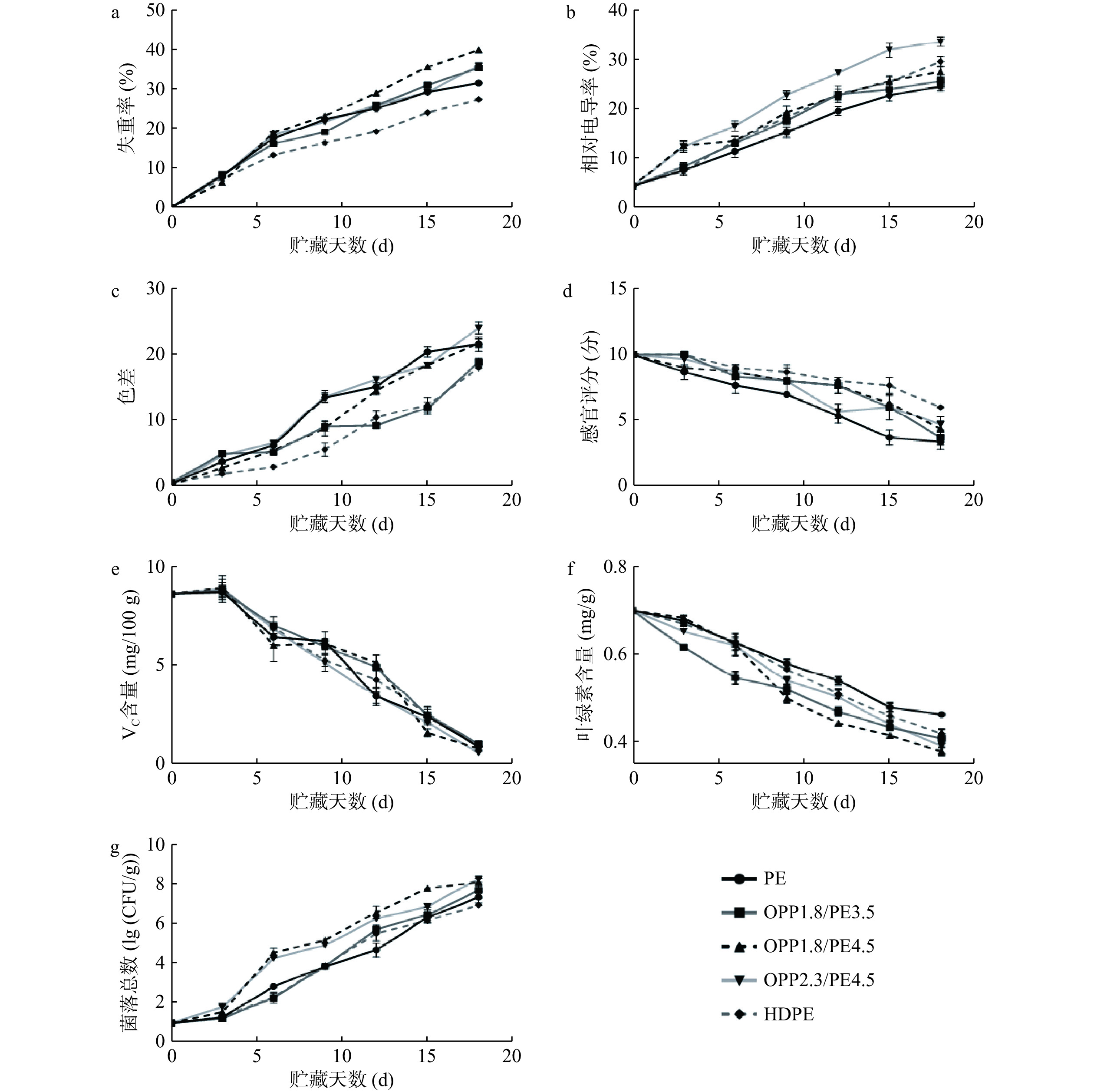
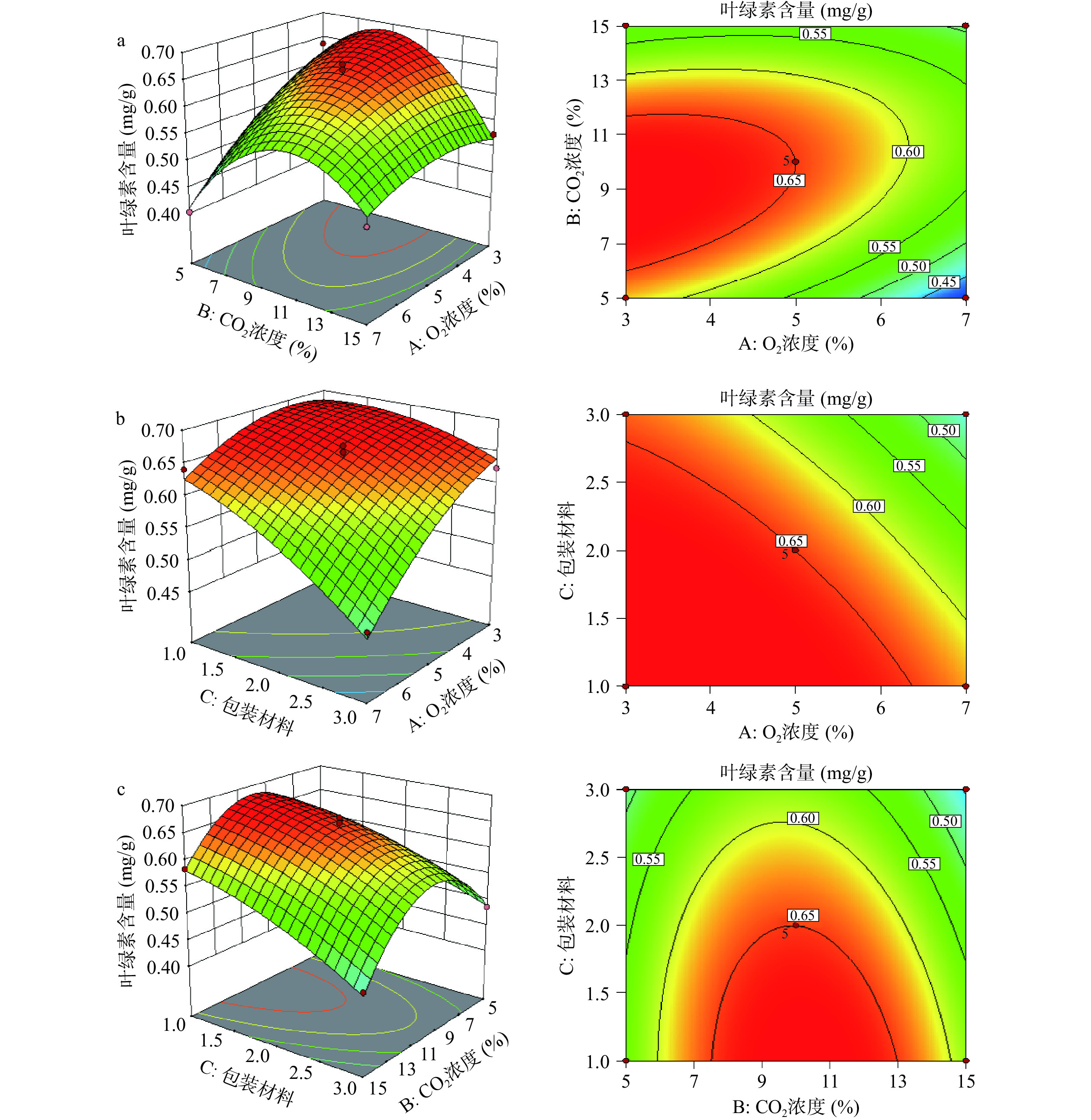
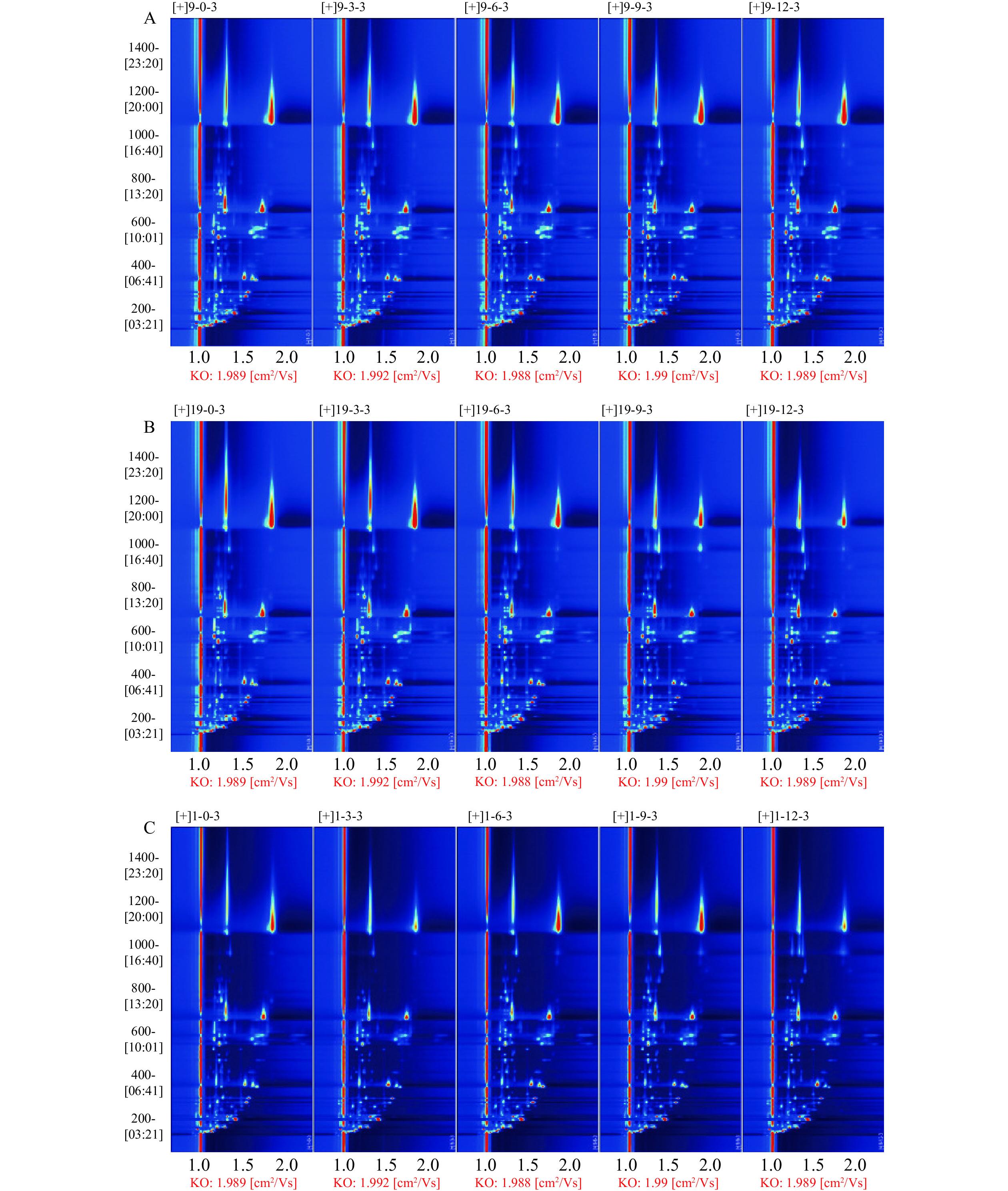

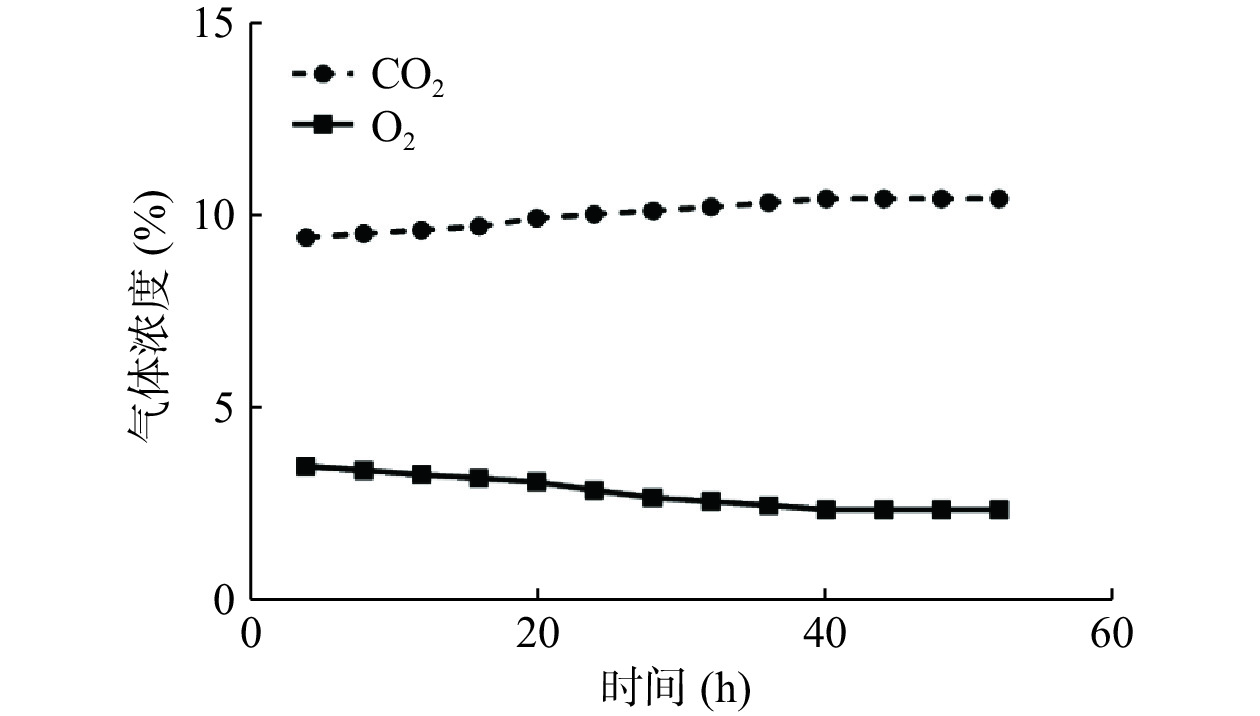
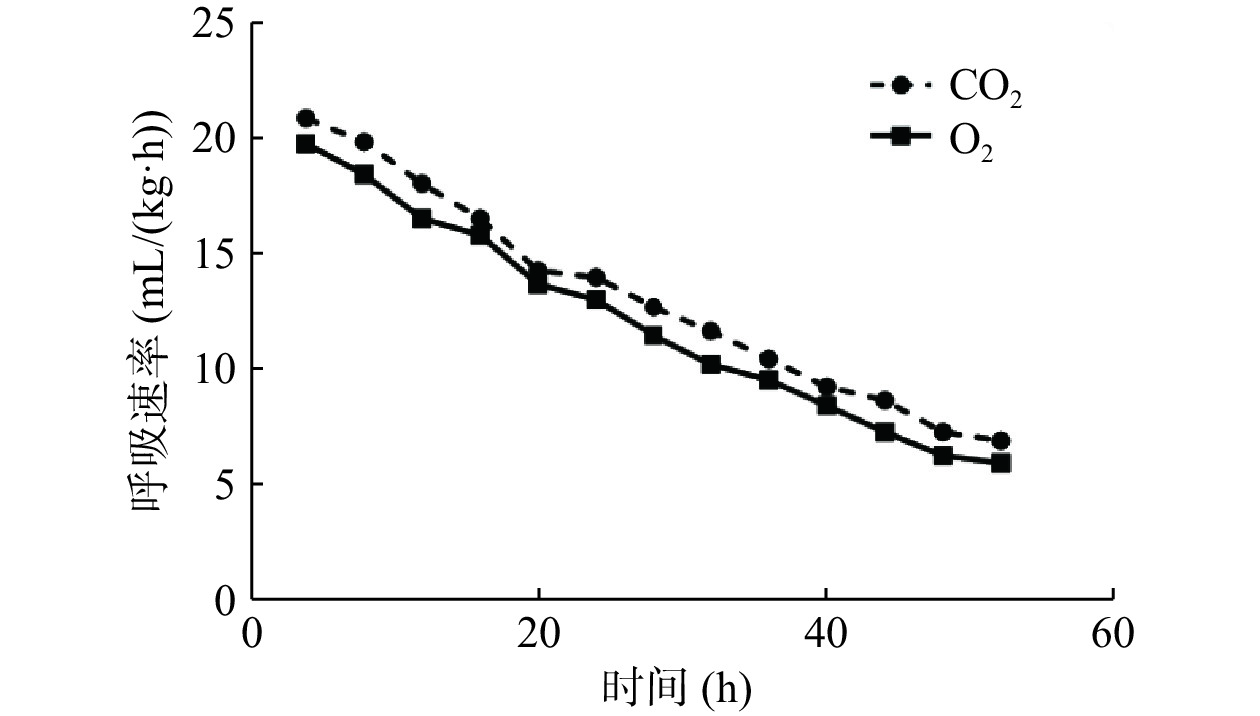
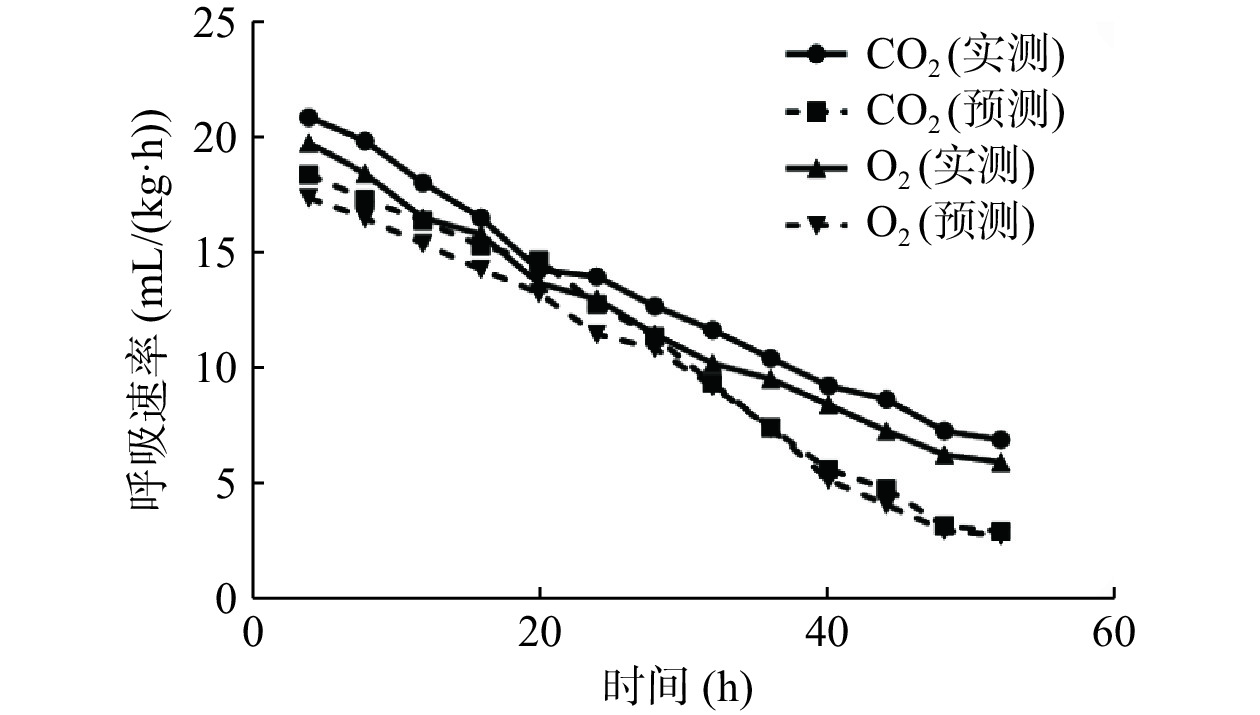

 下载:
下载:
